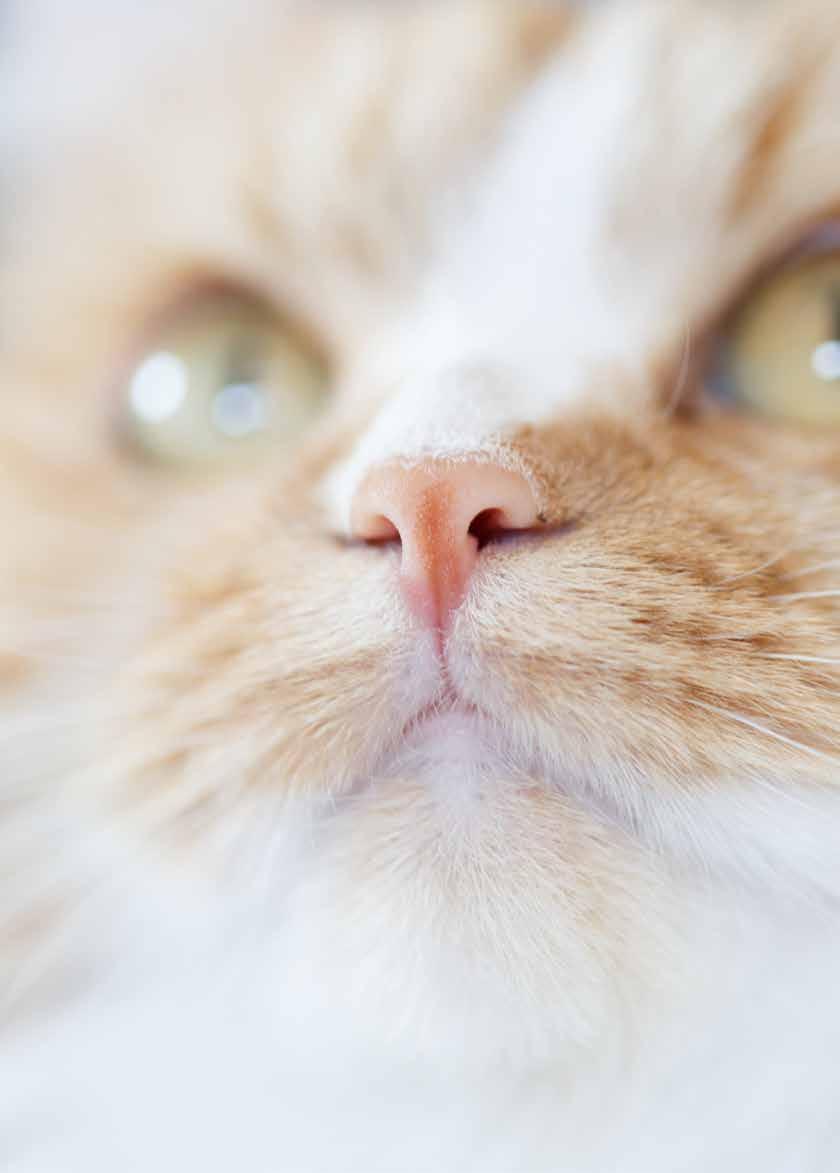

www.internationalpetfood.com www.perendale.com New sooncoursesPetfoodstarting at The Online Milling School See more on page 24 International PetFoodVolume 5Issue 8August 2023 Supplements and Nutrients - for our avian companions - Optical sorting - to ensure kibble quality - Spirulina - for Dogs and Cats - Reduce environmental footprint of PetFood August 2023 Download your online version:














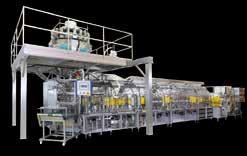
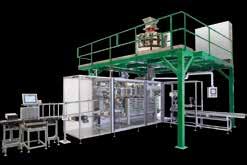
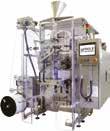
The Packaging Group GmbH Gerberstraße 50 · 51789 Lindlar, Germany · www.the-packaging-group.com If you can think it we can pack it The Packaging Group (TPG) Visit our NEW YouTube channel and find your perfect pet food packaging solution HDG RB-600 FAWEMA FA 456 WOLF VPC
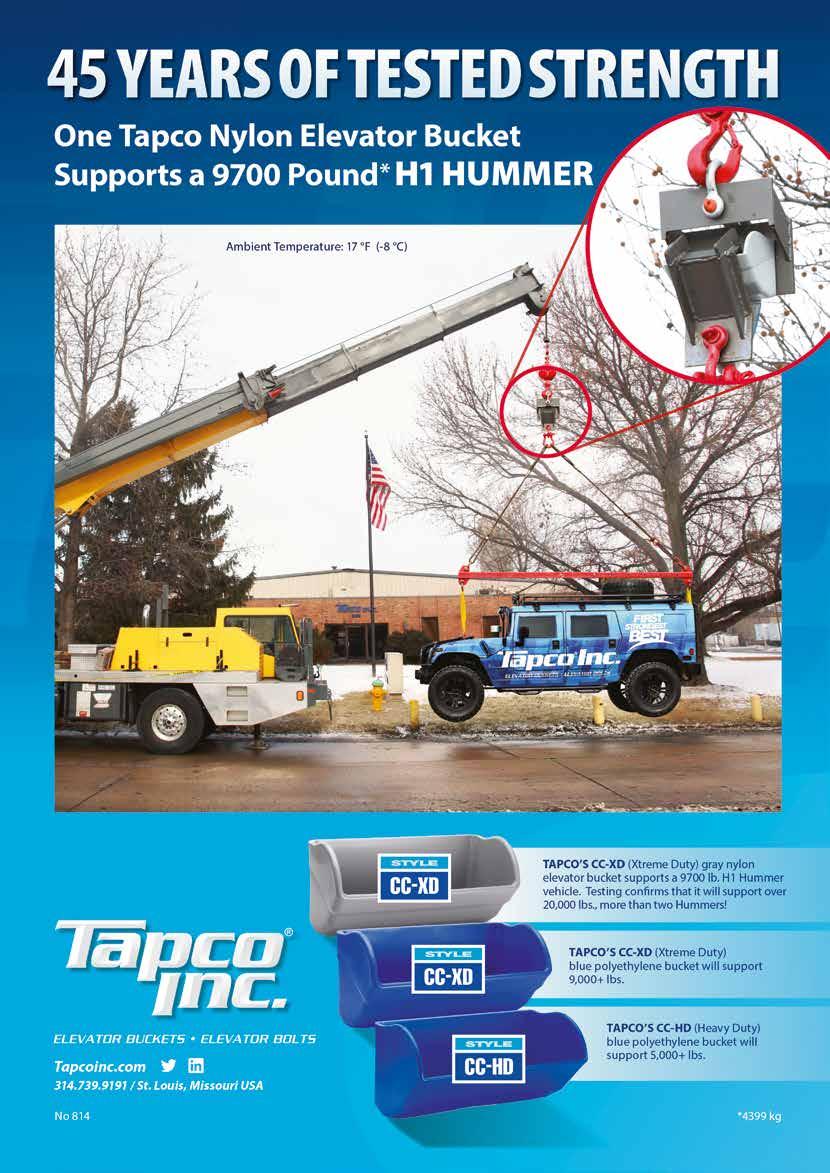
Perendale Publishers Ltd
7 St George’s Terrace
St James’ Square, Cheltenham, Glos, GL50 3PT, United Kingdom
Tel: +44 01242 267700
Publisher Roger Gilbert rogerg@perendale.co.uk
Managing Editor Joy Nelloolichalil joyn@perendale.co.uk
Technical Editor Joe Kearns joek@perendale.com
Nutrition Editor Prof Simon Davies simond@perendale.co.uk
Editorial team
Shannon Parsons
Tel: +44 (0)1242 267706 shannonp@perendale.co.uk
Niamh Cassidy
Tel: +44 (0)1242 267704 niamhc@perendale.co.uk
Community Manager
David Harvey Tel: + 44(0)1242 267700 davidh@perendale.co.uk

International Marketing Team
Darren Parris
Tel: +44 (0)1242303792 darrenp@perendale.co.uk
Latin America Marketing Team
Clarissa Garza de Yta clarissag@perendale.com
Turkey, Eurasia and Middle East Marketing Team
Mehmet Ugur Gürkaynak
Tel: +90 537 364 64 57 mehmetg@perendale.com
Egyptian Marketing Team
Mohamed Baromh
Tel: +20 100 358 3839 mohamedb@perendale.com
India Marketing Team
Dr T.D. Babu +91 9884114721 tdbabu@aquafeed.org
Asia Marketing Team
Dante Feng Tel: +886 0227930286 dantef@perendale.com
Nigeria Marketing Team
Nathan Nwosu Tel: +234 8132 478092 nathann@perendale.com
Design Manager
James Taylor Tel: +44 (0)1242303791
jamest@perendale.co.uk
Production Assistant
Cristina María Roldán Otero
Tel: +44 (0)1242 267700 cristinaot@perendale.co.uk
Circulation & Events Manager
Tuti Tan
Tel: +44 (0)1242 303790 tutit@perendale.co.uk
Development Manager
Antoine Tanguy
Tel: +33 6 78 57 76 45 antoinet@perendale.co.uk
August 2023 10 Industry News COLUMNS
Roger Gilbert 7 Joseph P Kearns
Professor Simon Davies
6
8
Petfood - Volume 5 - Issue 8 ©Copyright 2022 Perendale Publishers Ltd. All rights reserved. No part of this publication may be reproduced in any form or by any means without prior permission of the copyright owner. More information can be found at www.perendale.com
www.internationalpetfood.com 24 Training 25 Troubleshooting 26 Production focus 9 The PetFood Journal REGULAR ITEMS 22 Industry Profiles 30 Industry Events 29 The Market Place 40 The Interview 42 Industry Faces
International
ISSN 2754-4680
FEATURES
14 Supplements & Nutrients - for our avian companions

16 Optical sorting - to ensure kibble quality
18 Spirulina - for Dogs & Cats
20 Reduce environmental footprint of PetFood
It’s summer here in the northern hemisphere and a great time to be outside with your pet.
Our nutrition’s editor, Professor Simon Davies, is backing that up with his comments this month (overleaf on page 8) about how to 'spice up' your pet’s life.
Dr Davies is looking at that all-important area of spice and herb inclusion in a pet's diet and their impact on pet health and pet longevity. He is recommending their use and has some specific information to pass on to nutritionists and formulators alike.
Roger Gilbert Publisher – International Petfood
However, the inclusion of spices and herbs will mean the sourcing and handling of a different range of raw materials; with their differing flow characteristics, temperature requirements and moisture levels, having to be accommodated.
It is therefore recommended we pay attention to their inclusion and documention - not just noted on the label but also in the description of the improvements that the inclusion of spices and herbs are likely to achieve. However, do not overstate benefits and stay away from claims that are medical in nature and anything that cannot be supported by research and/or are accepted claims already made by their individual suppliers, etc.
We know that maintaining a sound digestive system and keeping gut microbes in the best of condition helps to ensure a healthy animal while reducing inflammation. And this is where the manufacturing process has a significant role to play.
Opposite my column here is our technical editor Joe Kearns referring to the importance of managing ingredients correctly with appropriate care to ensure the process is not damaging or decreasing nutritional impact. He has also taken time to review many of the features included in this edition and I’m thankful for that. Joe Kearns has the ability to identify the important aspects of each topic from a manufacture’s point-of-view, which after all is the target audience of this magazine.
And that brings me nicely to making reference to his Trouble Shooting section (page 25) in which on this occasion he looks at the temperature conditions within an extruder barrel. It’s a complicated process bringing a worldwide range of macro and micro ingredients and raw materials into a production process with precisely known nutritional factors in their profiles. And then to formulate and blend them into the desired ration, carry out grinding, moisture management and conditioning, etc prior to a heat treatment process (in this case) and then cool and coat an end product so that in its final ‘shelf-life’ state looks attractive - shape,
colour and size - and smells good to both the pet owner and the pet itself and overall fullfills the job of slating the hunger of the animal and providing the nutrition it needs for a specific period of its life. That’s a difficult journey for a consumer to comprehend when inspecting a product on the supermarket or petshop shelf.
The responsibility of all within the petfood chain is great. Collectively they carry out a vital task to ensure that what they pass on to the next stage in the food production process has the quality expected. When we say our pets are members of our families, we do not always see the commitment of the petfood industry to ensure their pet's food is nourishing, tasty, safe and affordable.
Finally, I want to turn our attention to training. All of the above steps can only be supported and maintained with quality training.
International Petfood is aware of its importance and its staff are committed to supporting ongoing training of those working in the petfood industry with the introduction this month - Thursday August 24, 2023 – of the Online Petfood Milling Course.
This is a great - and affordable - way to learn about all the various steps in the petfood manufacturing process from specialists and experts in their fields. This is not just a series of lectures but comes with an opportunity to connect you with knowledgeable people from across the world which you will then have in your contacts and from whom you can ask for help and advice.
Learning online has come of age! While hands-on training is still a vital part of the learning process, understanding all the steps in a process and the impact they have overall is vital.
Our Online Petfood Milling Course - six weekly 2.5 hour sessions - will take you from start to finish and offer you an opportunity to ask specific questions and even join in discussiosn at the close of each weekly session.
For those who attend the course, and will also be in Brazil for the Victam Latam show in early October, will be invited free-ofcharge to attend our special one-off faced-to-face seminar at which time you’ll receive your Course Certificate.
The Course Certificate is something special – it confirms your training and will remain with you throughout your career. It’s proving to be a most valuable document in demonstrating skills in the manufacture of pet foods! Look for the registration QR code in this edition.
Enjoy this edition - there’s lots here to interest everyone in our industry.
Did you miss our July 2023 edition? If so, don’t panic!
You can still read all of the great quality content that we published last month on our App – which you can download from Apple Store, Google Play or online at: https://magstand.com/petfood – with the latter platform granting you the opportunity to see all of our back editions on the screen of your desktop computer.
What you may have missed…
The Interview
Dr Philippe Tacon is a Director Business DevelopmentAnimal Health, Adare Biome, France
Dr Tacon has over 25 years of experience in the field of animal nutrition, both as a scientist and business leader. He has spent more than 10 years with Phileo Lesaffre Animal Care in Asia and Europe where he successfully developed the commercial portfolios for both aquaculture and livestock activities.
To read more, go to: https://flickread.com/edition/html/ index.php?pdf=64a816f94fa13#41

THE PUBLISHER
Our
last edition
Keeping in line with advancements in petfood production this month we have some interesting articles. Avian companion feed discussion, optical sorting of kibble, a field report, and insect meal advancements. Additional scheduled topics are drying, energy reduction and confirming temperatures in the extruder.
Joseph P Kearns Editor, International Petfood Magazine

Reviewing Shannon Parsons article on pet bird feeds, it is noted that developments moved feeds from simply seeds which are not complete nutritionally to pelleted or compounded feeds and extruded feeds. Seems there are short comings in all of these areas. Seeds alone are not nutritionally complete, pelleted feeds seen to be somewhat undesirable by the bird owners and some birds. Extruded feeds are considered more costly and the shapes and dyes used for colouring might have effects on the birds. Compounded pellets can be made of various diameters but the texture is hard to modify. Extruded feeds can be adjusted to any density or size and shape. Shapes can be made similar to seeds, crosses, banana, grape bunches and many others. Extruders can easily accept various liquid streams to a limit dependent on the equipment for flavors, nutritional ingredients, lipid levels and others. These types of products are similar to producing aquatic feeds and that arena had made tremendous advancements in capacity increases for smaller diameter feeds, much like what birds eat.
The article on kibble optical sorting by Buhler is most interesting. There are many things Buhler is famous for and one of them since KSU and milling school classes was their ability to remove dark specs or black seeds. An example is black kernels in rice. This development is impressive, I can say this having spent years in the industry desiring the perfect product. Not easy to do measuring right before the final bag. Pet owners are now more demanding of the feed appearance. Extruders are the start but attention to details can eliminate rough and out of spec shapes. Water and steam addition in the conditioner and barrel adjustments can greatly improve rough products. Most of the rest are die related which could be partially blocked holes, knives requiring adjustment, actual die hole design with grinding finer a possible solution. Sticky or clumping product can be one of the above but additional causes could be screw or head wear or clearance between them. Had an “in the field” situation where the product ran perfectly and suddenly after about two to three hours it went terrible on the sticky and clumping side. Of course, the extruder was blamed but in the end the water flow or steam flow changed. It was my opinion as the change was so fast that the boiler ran out of steam and was pumping water.
Insect meal for pets, a topic which is gaining traction. Thomas Lefebvre of Ÿnsect, France reviews some of the advancements they have developed in genetics of the insects used to maximize the nutrition of the product while reducing moisture and other inputs for the process.
These types of advancements are most interesting simply based on understand the ingredients is key in petfood production. Spirulina in dog and cat foods? OK, it was expected in aquarium feeds for the colour development it causes in the fish, salt water usually. Known for many benefits in humans, the articles reviews vitamin and other nutrient levels including its high protein level. BioCraft Pet Nutrition reviews the use and development of cultured meat and its advantages for petfoods.
Two of the topics on our list to review fuel use and drying. Just so happens these two do go hand in hand. Dryers do use fuel of energy but we must consider the importance of this step in the process. Drying at a lower energy usage is the goal but maintaining the moisture level near maximum and evenly throughout the mass is also quite important. A three percent moisture variance over a year of 60,000 tonnes made is 1800 tonnes. Since everyone keeps under the maximum then this water not sold. Just asked Siri average cost of 50 lbs. of petfood, US$117, seems high but you can modify the calculations. That is 5148 US per MT or over 9.25 million dollars lost based on water sold. Ok, we could discuss the cost of 50 lbs. of petfood but as you can see it is expensive not drying correctly. Dryers the standard in the industry is in 0.05 percent range. Dryers designed to industry standards are controlling the air flow and temperature exactly. I expect if lower fuel consumption is achieved it is generally in the fuel used to heat the air for drying. Recirculation of heated air and other options do exist along with selection of steam, gas or electricity for the drying energy. Selection is usually based on availability and cost and the dryer built accordingly.
There are many dryer designs in the industry, horizontal and vertical are the main general designs with a wide variety in the horizontal designs. My preference is the ability to adjust the dryer temperature in relation to the product passing through the dryer. High temperature at the dryer inlet where the moisture level is at its highest and as the product moves through the dryer the temperature is lowered to keep the product at the lowest possible temperature for nutritional benefits but yet still dry the product. Vitamins and other heat liable ingredients have lower losses when using this style dryer.
Temperature in the extruder barrel is more critical to know based on USA legislation on bacteria in petfoods. Heat or temperature probes in the extruder can yield data to verify a temperature has been reached. It is generally accepted we need to hit a minimum of 77 °C. for total salmonella control. On the other hand, if you are wishing to keep the temperature low for heat damage then 80 °C is where most of these ingredients start to degrade. Moisture in the extruder has a big impact on the survival of vitamins and other ingredients possibly damaged by heat. The higher the moisture the less damage while dry extrusion greatly increases the damage.
THE EDITOR
International Petfood - August 2023 | 7
Professor Simon Davies Nutrition Editor, International Petfood

Spicing up your pet’s life
Unquestionably diet plays a crucial role in the overall health and well-being of dogs and cats. In recent years, there has been growing interest in exploring the potential benefits of incorporating spices and herbs into pet food formulations. My editorial investigates how spices and herbs can improve diet formulations for our canine and feline friends, particularly in terms of enhancing digestive health, promoting longer lives, increasing vitality, and elevating disease prevention and welfare. By analysing scientific research and empirical evidence, I highlight the potential advantages of including spices and herbs in pet diets and provide recommendations for their safe and effective utilisation.
Certain Spices and herbs contain bioactive compounds with anti-inflammatory, antimicrobial, and antioxidant properties, which can positively impact digestive health in dogs and cats. For example, ginger and turmeric can alleviate gastrointestinal distress, reduce inflammation, and improve digestion. Additionally, the antimicrobial and anti-inflammatory properties of certain herbs can alleviate discomfort associated with gastrointestinal issues such as flatulence and constipation, promoting a better sense of well-being. As we increasingly appreciate the functional aspects of the gut microbiome and its systemic associations, herbal and spice feed additives are expected to modulate the microbial ecology of the gut favourably. We know that the commensal bacteria that inhabit the gut epithelial lining (enterocytes) are vitally important in protecting the animal against pathogenic infiltration. Herbal extractions can help stabilize ‘friendly’ bacteria and calm the immune system to promote tolerance.
Another example is cinnamon, that has shown promise in regulating blood sugar levels, mitigating diabetes type 2, and supporting healthy weight management. Garlic and oregano, for instance, possess antimicrobial properties that can help combat infections and strengthen the immune system. Furthermore, antioxidant-rich herbs such as rosemary and thyme have been associated with anti-aging effects. For instance, turmeric, due to its active compound curcumin, exhibits anti-mutation
properties and may help reduce the risk of certain cancers. Other herbs and plant derived phytobiotics may improve coat quality and even reduce any skin infections and tertiary bacterial, parasite and fungal issues. Similarly, parsley and mint offer natural breath freshening benefits and can aid in maintaining oral health in dogs and cats. By providing a variety of flavours and aromas, these additions can improve palatability, leading to increased food consumption and satisfaction.
While spices and herbs offer potential benefits, it is important to consider several factors for safe and effective utilisation. First, consult with a veterinarian or veterinary nutritionist to ensure the specific needs of individual pets are met. Dosage and appropriate selection of spices and herbs should also be considered, as some may be toxic or unsuitable for certain animals. Moreover, quality control and sourcing of these ingredients are crucial to ensure purity and safety. Traditional pet diets often lack variety and fail to provide the necessary phytochemicals found in spices and herbs, which possess numerous health-promoting properties. This view is changing rapidly with much more innovation and lateral thinking in modern pet foods. As we see more developments in fresh raw foods for dogs that include both meat and vegetables, then spices and herbs can play an additional role for future markets for dry and wet diets.
However, further research is needed to determine optimal dosage, specific benefits, and any potential risks associated with individual spices and herbs. By carefully formulating pet diets, considering individual needs, and prioritising safety, pet owners and professionals can leverage the potential benefits of these natural additives to support the overall health, lifespan, and well-being of companion animals. With further research and understanding, the integration of spices and herbs into pet food formulations can contribute to healthier and happier lives for our beloved companions.
Next time you reach for the spice rack, think beyond the curry and casserole dish and what you can do for your pets?
8 | August 2023 - International Petfood
The PetFood Journal
Petfood Journal is a new online publication by Perendale Publishers Ltd., United Kingdom with a distinguished track record of technical and trade magazines in the agricultural sciences. This new peer-reviewed scientific journal will serve academia and the commercial petfood industry with high quality papers relating to the science and technology of petfood development and production for the rapidly expanding companion animal sector. It is envisaged to address fundamental and applied nutritional research addressing requirements for advanced feed production manufacturing for dogs, cats and many other species such as guinea pigs, rabbits, rats and exotics e.g. reptiles, amphibia and fish (aquatics). The journal will embrace information on essential amino acids, proteins and energy sources as well as key vitamins and minerals pertaining to maintenance, growth, feed utilisation efficiency and health. A major area will be studies that focus on feed ingredient assessment and in particular those that are sustainable alternatives to traditional sources. Therefore investigations directed towards plant and next generation proteins like insect meal, algae and microbial sources would be desirable areas. Novel oils and lipids that provide essential fatty acids would be of considerable importance. Studies on functional ingredients affecting the health and immune function of pet animals are attractive. We would welcome papers researching the role of prebiotics, probiotics and phytobiotics on gut health, mucosal immunity and their interaction and modulation of the intestinal microbiota. Petfoods play a significant role in animal behaviour due to palatability and smell. Research on these interactions would be welcome and of interest to the scientific community and stakeholders. Given the diversity of different types of commercial diets ranging from wet, canned and extruded dry diets as well as treats and speciality diets, there is much scope to provide information on these advances. We also cover papers on feed production manufacture such as milling, pelleting, shaping and texture of petfoods such as extrusion. The journal recognises that petfood science & manufacturing technology plays a vital role in promoting the health and well-being of our pets. Optimal feed management and environmental impact of diets are worthy of inclusion.
Manuscripts can consist of scientific work in the form of typical standard papers, short scientific communications or as review articles.
In essence, Petfood Journal will appeal to the veterinary practitioner, scientist, technician, feed manufacturer and at various levels in academia such as undergraduate, masters, PhD students and post-doctoral, researcher, being an invaluable source of validated information and a potential location for their own research findings.

The manuscripts will be fully peer-reviewed by appropriate members of our editorial board and approved finally by the Editor-in Chief. These OA papers will be available on our official website Internationalpetfood.co.uk and printed as well as being downloadable. Links will be provided within our existing International Petfood magazine.
Please do not hesitate to get in touch with any queries at journal@perendale.co.uk.

2023
International Petfood - August 2023 | 9
Study shows pet supplement shoppers would cut their own expenses before their pet’s
The Marketplace study reveals insights into pet supplement consumer trends and opportunities for health and wellness brands.
U.S pet supplement shoppers are more likely to cut spending on their own food, transportation, healthcare, housing, and insurance before pet-related expenses, according to a new survey.
“Many pet parents consider their pets family, and these relationships influence their purchase behaviours and priorities,” said Nicole Hill, executive director of strategy at MarketPlace, the St. Louis- based brand strategy firm that authored the study. “Pet supplement shoppers’ trend to be early adopters who also prioritise pet-related expenses. Brands that successfully build relationships with these pet parents serve the audience’s functional needs and share their personal values.”
When asked what they would cut first to reduce monthly spending, only three percent of pet supplement shoppers said they would cut pet-related expenses. While they are most likely to cut non-essential categories like entertainment (64 percent) and apparel (38 percent), 19 percent said they would cut their own food expenses, 8 percent would reduce transportation
costs, and 5 percent would spend less on healthcare. Examined attitudes and behavioural trends in purchasing nutritional supplements for pets. Key findings included are that when purchasing a pet supplement, most pet parents surveyed said they first look for a condition-specific benefit, like joint support, followed by price and then brand.
More than one-third of pet supplement shoppers conduct online searches when researching pet health. Similarly, more than one-third seek pet health information from friends and family.
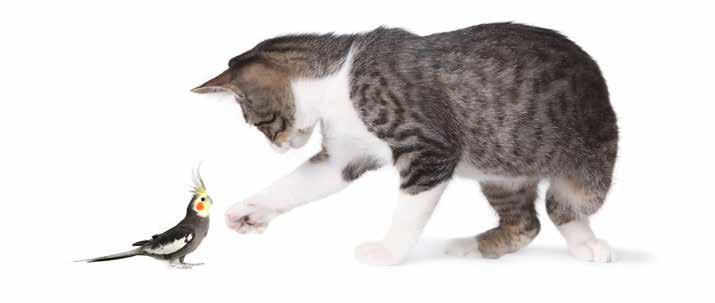
Attributes like “vet recommended,” “clinically proven,” and “all natural” are likely to inspire confidence in a pet supplement.
“Validation – from a vet, clinical trials, or even online reviews- builds confidence; that’s why pet parents look to sources with authority and experience,” said Hill, who on May 17, 2023, presented findings from the firm’s annual survey at the National Animal Supplement Council’s Annual Conference for the fourth consecutive year.
As a full-service research and branding firm, MarketPlace uses insights from its proprietary research to inform business, brand and media strategies and activations for pet brands of all sizes. Detailed findings and insights about pet supplement trends from the company’s annual research are available on its website. A white paper providing the latest data and year-overyear comparisons on formats, ingredients, spending, shopping channels and more will be available later this year.
The Big Sky country-inspired pet brand pledges commitment to sustainability
Montana Dog Food Co. announces that it has joined the Pet Sustainability Coalition (PSC), a nonprofit organisation dedicated to creating a more sustainable pet industry.
As a PSC member, Montana Dog Food Co. will have access to resources and tools needed to help further their sustainable initiatives. The coalition’s collective knowledge, along with its network of like-minded organisations, will enable the brand to further reduce its environmental footprint and enhance its commitment to social responsibility.
“Living in Montana, protecting our natural resources
is a way of life,” commented Kara Haynes, CEO of Montana Dog Food Co. “We became a member of the Pet Sustainability Coalition so that we can continue to elevate our company’s environmental and social impact on the earth.”
Crafted with responsibility sourced ingredients, Montana Dog Food Co.’s freeze-dried raw diets and treats deliver the taste and nutrition dogs need for a lifetime of happy adventures. The brand is committed to using only whole food ingredients that are sustainably sourced.
10 | August 2023 - International Petfood N
Hill’s Pet Nutrition introduces new products
To further support pets with stomach and skin sensitivities and help create a healthier and more sustainable future, Hill’s Pet Nutrition, a global leader in science-led nutrition, announced its popular Science Diet Sensitive Stomach & Skin portfolio is now available with MSC-certified Alaskan Pollock and insect protein.
The new formulas feature high-quality, traceable, wild-caught Alaskan Pollock from a Marine Stewardship Council (MSC) certified fishery, as well as innovative insect protein (for the dog recipe). These new protein sources represent Hill’s focus on science-led innovation, offering pets not only biology-based nutrition, but also a commitment to creating a better world for the future generations of pets.
“Our new Science Diet Sensitive Stomach & Skin line extension delivers the same science-led, tailored nutrition and key benefits as the original Science Diet Sensitive Stomach & Skin products but now features more sustainable seafood,” said Dr Karen Shenoy, US chief veterinary officer for Hill’s Pet Nutrition. “We are proud to offer pet parents a new and more sustainable way to feed their pets, leveraging our focus on using science to truly transform lives.”
The product’s benefits include:
• Highly digestible recipe that’s gentle on the stomach
• Vitamin E & Omega-6 fatty acids for skin & coat nourishment.
• Clinically proven antioxidants, Vitamin C+E, for a healthy immune system
• Great taste with a savoury fish flavour pets will enjoy On an annual basis, 43 percent of cats and 56 percent of dogs encounter digestive issues, while skin issues affect 31 percent of cats and 42 percent of dogs. This is according to a 2022 nationwide survey of 2,000 cat owners and 2,000 dog owners. Pet parents and their four-legged furry friends deserve a food option made with highly digestible ingredients that are gentle on the stomach and support healthy skin, coat and fur. At the same time, nearly three out of four (71 percent) dog or cat owners agree that it is important to use environmentally friendly pet products and services, per a consumer survey of nearly 1,500 pet owners.
Proteins with a Purpose

The Wild Caught Alaskan Pollock offers a highquality, lean protein that provides a rich source of Omega-3 fatty acids. By using MSC-certified pollock, Hill’s Pet Nutrition offers a traceable ingredient from a sustainable fishery with a 1% bycatch rate that meets requirements across three principles:
Only fishing healthy stocks
Being well-managed so stocks can be fished long-term Minimizing their impact on other species and the wider ecosystem
The Innovative Insect Protein, used in the dog recipe only, is raised in North America and offers a great source of fibre and beneficial nutrients.
“We selected these proteins with purpose because they promote optimal digestive and skin health for pets, while also keeping sustainability top of mind,” Dr Shenoy said. “This innovative approach to ingredients is part of our guiding philosophy, which includes delivering science-led nutrition, bringing people and pets together, and helping the planet for the next generation.”
The focus on these new protein sources is part of Hill’s evolution in its business practices that keep the planet and natural resources in mind. Other efforts have included sustainable sourcing, manufacturing with minimal impact and investing in a more sustainable future.
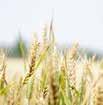
Creating Sustainable Products at Hill’s Pet Nutrition

Hill’s Pet Nutrition creates a holistic view on taste to help ensure pets prefer its products across several dimensions, including how foods smell and taste.
“Hill’s Pet Nutrition is uniquely positioned to unlock the trifecta of healthy, tasty, and sustainable thanks in part to the innovative approach we take at our Global Pet Nutrition Centre,” said Dr Stephen French, a principal scientist and lead product developer at Hill’s Pet Nutrition. “We did extensive work to optimize the taste and enjoyment pets will have eating our new Science Diet Sensitive Stomach & Skin. Our pet partners tried many different recipes to help us identify the optimal combination of ingredients that pair well with these exciting new protein sources to deliver great tasting foods.”
BOURNE AES R C H & RECRUITMENT SELE C T I NO � CHIEF COMMERCIAL OFFICER � GENERAL MANAGERS � MANAGING DIRECTORS � CHIEF MILLERS � FEED & POULTRY MANAGERS � MAINTENANCE MANAGERS � R&D NEWPRODUCT DEVELOPMENT � SALES & MARKETING � PLANT MANAGERS � CFO’S ���� bournerecruitment.co.uk ���� +44 7764 465 897 THE EXPERT IN FEED, FLOUR MILLING AND FOOD PRODUCTION RECRUITMENT POSITIONS RECRUITED: RECRUITING GLOBALLY
International Petfood - August 2023 | 11 N
Pet sector will increase exports to US$400 million in search of new markets
The pet products, materials, and accessories sector, which has reached a market of 300 billion dollars in the world, draws attention with its 150 percent growth in the last 5 years. Companies are turning to exports to gain a larger share of the global market while the sector has reached a market size of US$1 billion in Turkey. Selçuk Çetin, General Manager of Ulusal Fuarcılık, who stated that the targets of the companies in the recent period are exports and foreign customers, said, “The sector aims to increase its exports of US$250 million to US$400 million with the search for new markets.”
The pet products, materials and accessories sector has grown by 150 percent in the last 5 years globally, reaching a market of 300 billion dollars. Stating that investments in the sector have increased recently, Selçuk Çetin, General Manager of Ulusal Fuarcılık, said: “Although Turkey seems to be a country at the beginning of the road, it has become an export-oriented sector by breaking the Chinese dominance in the last 5-6 years. According to total consumer figures, Turkish companies have approached 1 billion dollars, of which 250 million dollars is exports.”
Noting that Turkish companies in the pet sector are focusing on exports to get more share from the global market, Çetin said, “One of the sectors that grew the most during the COVID-19 pandemic was the pet products sector. While the average annual growth rate of the pet products and services market in Turkey was around 15 percent, this rate increased up to 50 percent during the pandemic period. Those who spent more time with their pets during the pandemic also focused on their needs. All kinds of products and services for pets can be produced in Turkey.”
The sector exports food to 70 countries and cat litter to 65 countries
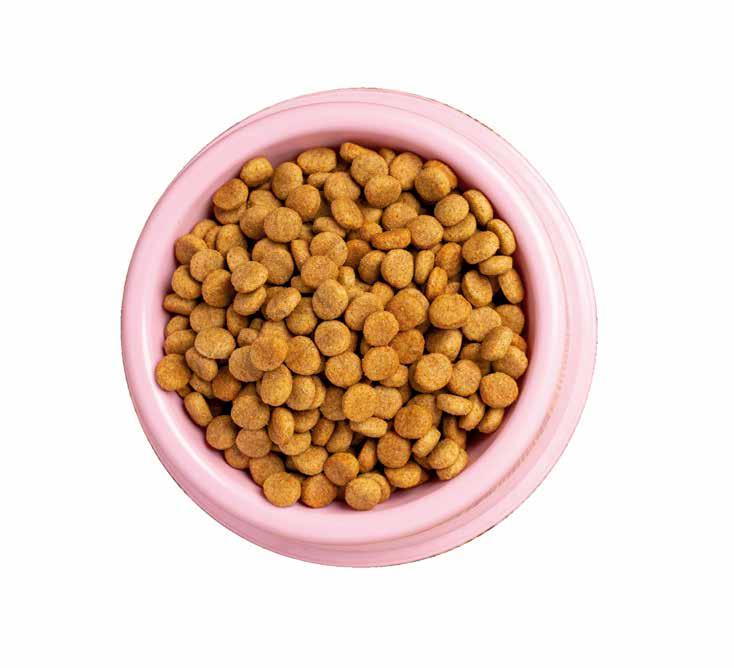
Stating that the annual growth rate of the pet products market has seen 17 percent and has grown by 150 percent in the last 5 years, Çetin said, “I can also say that the pandemic has a great impact on this. Looking at these figures expressing the sector growth until 2025 in Marketing reports, it is pointed out that the pet market will grow by 9.6 percent, especially in Asia, in the world economy, which shrank by 3.8 percent in the pandemic. This means a volume increase of 35 billion dollars after a maximum of 4 years, which means that we
should quickly attract this figure to ourselves. Approximately 600 companies operate in our sector, which exports food to 70 countries and cat litter to 65 countries. Recently, companies have focused on exports and international clients. Our sector aims to increase its exports of 250 million dollars to 400 million dollars in 2023 with the search for new markets.”
Petzoo Eurasia will multiply growth even more
Stating that while the business volume contracted in many sectors during the pandemic period, the growth in the pet products market attracted attention, Çetin said,
https://flickread.com/edition/Petfood

International Petfood comes to you either in print or digitally Whichever way you want to receive, please sign up on our Flickread for your personal copy which will give you access, from your desktop, to our back-issue library.
from
to use the
for a free
of
coupon code: HNY23
INTERNATIONAL Download your online version
The App can be downloaded
your favourite app store. We invite you
code below
edition
our magazine either mailed to you or via our App Use
PETFOOD
12 | August 2023 - International Petfood N C M Y CM MY CY CMY K



Supplements Nutrients
- for our avian companions -
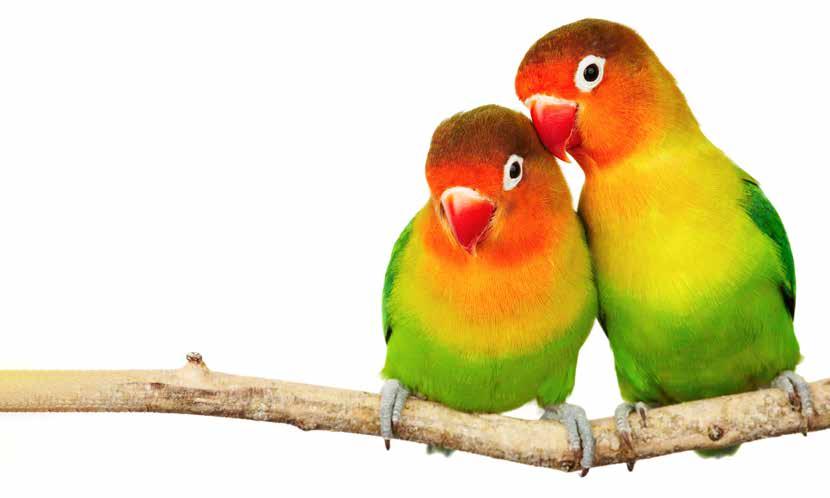 by Shannon Parsons, International Petfood magazine, UK
by Shannon Parsons, International Petfood magazine, UK
hat to feed our pet birds have been a controversial topic for decades now in certain parts of the world. Many owners prefer to give their birds a seed-heavy diet which don’t provide the necessary nutrients they need to remain healthy and happy. Birds need a balanced diet that consists of protein, carbohydrates, fats, vitamins, minerals, and water. This can be achieved with the use of a pellet-based diet and supplements.
Pellet
Pellets rose to popularity in the UK during the 90’s but fell out of favour not long after when breeding results plummeted. Pellets provided the balance in diet that a bird needs to prevent illness but ended up being rejected by many owners. Instead, the serving of them lessened and what was served was mixed with seeds, soft foods and fruits, and supplements. Things have changed again however in the last few years.
With recommendations from veterinarians and the increased accessibility of information and research, pelleted diets are now more often used by pet owners. Vets are educating pet owners on the benefits of pellet-based diets and that seeds are high in fat and low in essential nutrients so the owners can begin to understand the importance of pelleted diets and supplements.
There are two different processes used when pelleted diets are manufactured: bound and extruded. Bound pellets in general are not as palatable as extruded, with the food material uncooked and having a longer fibre chain length. Extruded pellets will have the
Wmixture forced through an extruder, taking on the shape of the ‘die’, allowing the pellets to be made into different shapes and colours. Due to the variety of shapes and colours of extruded pellets, owners are advised to be watchful of the bird’s diet and that they aren’t avoiding certain pellets. The bird must eat the whole portion of food provided to gain all the nutritional benefits that the pellets will offer.
Supplements
Supplements are a key feature in the bird’s diet to ensure that all the necessary nutrients are being met and that the bird isn’t becoming either malnourished, obese, nutrient deficient, or high in levels of fat and cholesterol. To be sure that feeding our avian companions an accurate diet with all the needed nutrients, it is best to consult the local vet to create an accurate diet that works best for the individual bird to boost their health and make them happy and healthy.
This provides the nutrition to the birds that their diets may miss out or the pet generally lacks. Some of the essential vitamins that birds need and can be provided through supplements are vitamin A and D, calcium, amino acids and water and fat soluble vitamins B, E, K, and C.
Supplements can be provided to the avian through either soluble or non-soluble ways. The soluble version must fully dissolve in the water the bird drinks so that it spreads evenly and thoroughly, otherwise it will gather at the bottom and will go unconsumed. However, some birds prefer eating moist food and like to avoid drinking water, getting their liquid intake through their food. This would make the soluble supplements used in the water to be unintentionally avoided because of the bird’s aversion to drinking. A solution to this is to use a supplement pellet or to mix in an ‘on-food’ supplement.
14 | August 2023 - International Petfood F
Vitamin D and Calcium
Deficiency in vitamin D is incredibly important to watch out for with pet birds as they’re primarily kept indoors. Some symptoms of vitamin D deficiency in birds are easily fractured bones, significant decrease in weight (which could be an indicator for weaker bone strength), and physical abnormalities such as overgrown or soft beak, bent keels, and splayed legs.
Keeping the bird cage near the window where the sun comes through is assumed to provide enough vitamin D but modern windows block out a lot of the UV rays which prevents a lot of the nutrient a bird needs. To ensure that the bird is getting the vitamin D they need a UV bulb can be used that produces UVA and UVB light. Alternatively, vitamin D pellets can be mixed in with their food.
Calcium is directly tied to vitamin D and if vitamin D is low, odds are that so is the calcium levels. Calcium is needed for blood clotting, muscle function, and attachment of feathers. Low levels of calcium can lead to the avian being more susceptible to a wide range of cancers, organ disorders, and immune system dysfunctions. To absorb calcium, D3 and magnesium is needed. To make sure that the calcium is being absorbed, an option is to provide calcium pellets or an all-in-one calcium-magnesium and vitamin D pellets. This will make sure that the calcium levels remain healthy and consulting a vet will help to make sure that the owner isn’t providing too many, too little or unnecessary supplements.
Fats and essential fatty acids
























































Fats are a source of energy in the birds’ diet while fatty acids are required for the formation of membranes and cell organelles, hormone precursors, and the basis for psittacofulvin. Fats and fatty acids are key to a pet bird’s diet, but the owner must be careful that the bird isn’t fed a too high energy diet, especially with a restricted amount of exercise, in case the bird develops an illness associated with hepatic lipidosis.


High fat levels also cause obesity, congestive heart failure, diarrhoea, and oily feather texture. It can also interfere with the absorption of other nutrients, such as calcium. On the other hand, low amounts of fat can lead to weight loss, reduced disease resistance, and overall poor growth.
A combination of adequate fat consumption and daily exercise can prevent build-up of fat- 1-2 times out of the cage a day provides the needed exercise and mental stimulation.













Amino acids and protein



















Proteins are broken down into amino acids, acting as building blocks for muscle formation and being used to make tissues for skin, feathers, and keratin. Birds must avoid an excess and deficiency of proteins. Too much protein is associated with renal disease, behavioural changes, and regurgitation. Too little is associated with anaemia, weakness, poor reproductive performances, and plumage colour changes.
Protein pellets are a good way to provide any missing protein and amino acids. Some birds can be picky however and won’t eat pellets. An alternative to this is to use small living organisms like insects, boiled eggs, and monkey biscuits.
F International Petfood - August 2023 | 15
Optical sorting
- to ensure kibble quality -
by Bühler, Netherlands
The rising quality demands for the petfood market require innovative approaches to meet and surpass customer and regulatory standards. One company that has always been ahead of the game when it comes to quality is Dutch petfood supplier Vobra. Operating since 1932, the company supplies quality dog and cat food to Vobra-owned brands and private labels and is active in over 35 countries. Recognising the need to stay ahead of the market, Vobra invested in a SORTEX FB machine, the leading optical sorter for kibble quality.
The petfood market requires a homogeneous and uniform kibble size and shape, combined with a zero tolerance for foreign materials. Vobra’s kibble is made of natural ingredients and processed to the markets required specifications using a Bühler Extruder and checked by Bühler’s SORTEX FB optical sorter.
SORTEX inspects every kibble for quality
With a throughput of five tonnes per hour, Vobra needed a sorter that could ensure the quality of every kibble, even with the demands of 180,000 kilos of dog and cat kibble daily. With SORTEX they got exactly that. The high-definition cameras inspect every single kibble, removing defects like crosscontamination, oversized/undersized kibble, and small pieces of bone as well as any foreign material with pinpoint accuracy. This ensures a final product that flawlessly passes regulations standards. To confirm the reputation of SORTEX as a trusted brand that surpasses these standards, Paul Stoutjesdijk, Manager of Operations at Vobra, stated, “Our customers ask for the product that is processed by the SORTEX optical sorter.”
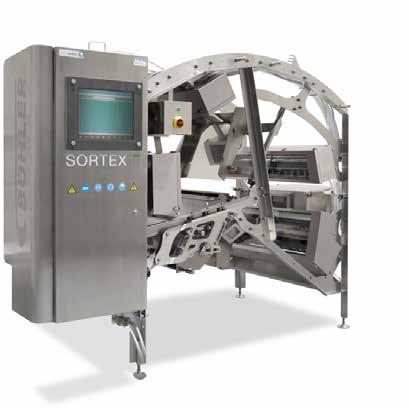
In 2021 Vobra constructed a new factory at Veghel, taking the opportunity to evaluate its process line and recognise where improvements could be made, leading to the decision to incorporate the SORTEX FB alongside a Bühler extruder. Paul Stoutjesdijk continues by saying, “The setup of trials in England made us aware that this was the equipment we needed. Many international petfood markets now require a uniform kibble size and have zero tolerance for foreign material.”
The importance of optical sorting in petfood
By incorporating the SORTEX FB into the process line, Vobra seized an opportunity to stand out within the petfood market. With the stringent market requirements for uniform kibble size and the absence of foreign material, optical sorting has become an essential part of the process for petfood. Alongside improved yield, by removing only the defective kibble from the product stream, SORTEX significantly reduces waste, helping the sustainable efforts of the petfood industry, and improving the safety of the kibble for pets.
“We are proud to have worked with Vobra Special Petfoods for this project and have been able to supply an optical sorting machine which can be part of their quality control systems for supplying a high-quality product to the market. Our optical sorters offer the industry the ability to add a quality control step, to check each kibble and eliminate anything that is not at the expected level. We can also offer Buhler’s SORTEX Monitoring System that is able to send alerts if an issue is detected, real time dashboard and a daily statistical report of the production,” Stephen Jacobs, Head of Segment Fruit & Vegetables, Bühler.
Dutch petfood suppliers, Vobra Special Petfoods, has enhanced the safety and quality of their product with the new addition of a SORTEX FB machine to bring the highest quality kibble to the petfood market.
16 | August 2023 - International Petfood F
With customers’ expectations of quality increasing, safety has never been more important. The biggest risks arise from foreign material, cross contamination, under- and oversized kibbles as well as aflatoxin in raw material. Optical sorters from Bühler with removal efficiencies of up to 99 percent offer solutions to these pressing issues and allow pet food producers to manage their risk and subsequently lower the probability of any costly product recalls.





What next for the collaboration?
With the new factory in full operation, Vobra is looking to expand its collaboration with Bühler in the coming years. Optical sorting will become more commonplace in the supply of safe petfood, eventually, the stringent market requirements will make optical sorting a necessity. Good news for dogs, cats, and pet owners around the world.





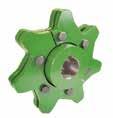
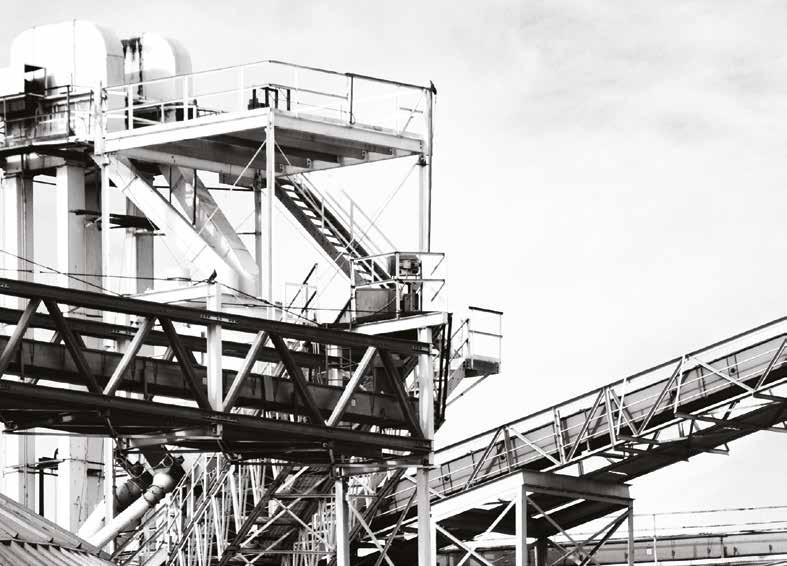
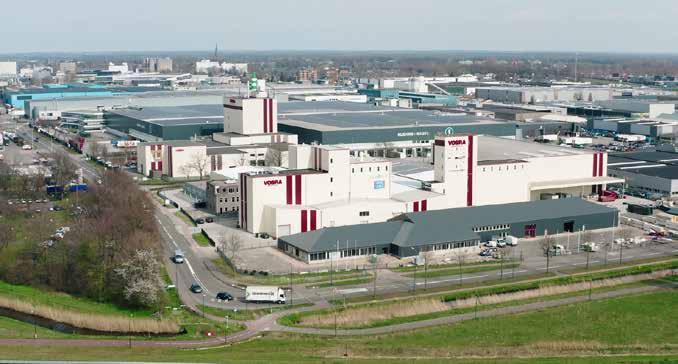
DESIGNS AND MANUFACTURES COMPONENTS FOR BUCKET ELEVATORS AND CONVEYORS Engineering Solutions Since 1888 Improving the Safety & Efficiency of Your Plant www.go4b.com A Worldwide Manufacturer www.go4b.com ELEVATOR COMPONENTS HAZARD MONITORS & SENSORS CONVEYOR CHAIN #23399 Global Ad Styles.indd 8 07/06/2023 10:07:25 F International Petfood - August 2023 | 17
4B
Spirulina is the perfect superfood for canines and felines. Due to its numerous health advantages for both people and animals, this algae has recently become one of the most well-liked supplements. If you’re thinking about taking supplements, spirulina has practically all of the vitamins and minerals you need.
Below, we’ll provide additional information about this superfood and explain why feeding it to your pets is highly advised. Remember that it is not a medicine, and we advise you to visit your veterinarian if your dog or cat has a specific medical issue.
What is spirulina?
Spirulina is a small, unicellular alga with a spiral structure that lends it its name. Its distinctive colour is a bluish green, with the blue coming from phycocyanin and the green from the high chlorophyll concentration.
It is a wonderful source of nourishment. It is rich in vitamins, particularly group B, minerals including iron, magnesium, zinc, selenium, and calcium as well as proteins and vital fatty acids.
To be more precise and to help you grasp the scope of its qualities, 50–70 percent of its dry weight is exceptionally highquality protein that is prepared for absorption by the body, as opposed to 36 percent of soy, which is well recognised for its high protein content.
It is one of the finest sources of Gamma-Linoleic Acid (GLA) in terms of fatty acids. Since this fatty acid only makes up little more than 40 percent of spirulina, it is quite uncommon to find it in regular meals. GLA has a strong reputation as a dietary supplement since it is a precursor to chemical mediators of immunological and inflammatory responses. We advise incorporating a little amount of sardine oil into your diet to maintain a healthy balance of Omega 3 and Omega 6. And compared to carrots, it has ten times as much beta-carotene.

Spirulina benefits for dogs and cats
1. Strengthens the immune system
An immune system imbalance is a common cause of exhaustion or a lack of energy in dogs and cats. Metabolic energy is essential to the immune system’s health. Spirulina can assist in stabilising low levels and enhancing normal function, which releases more metabolic energy. This results in improved health, increased energy, and greater vitality.
for Dogs & Cats
by Jyothsna Nelloolichalil, International Petfood, UK
2. Powerful antioxidant and anti-inflammatory
Because of its high chlorophyll content, spirulina is a fantastic body cleaner. Toxins are something that our furry friends are constantly exposed to, thus the body has to get rid of them. Chlorophyll and Phycocyanin support the liver’s proper function and safeguard the kidneys, assisting your body in fending off the effects of free radicals.
Due to its ability to lessen discomfort and inflammation, phycocyanin is also ideal for dogs and cats dealing with inflammatory disorders. Highly advised for elderly cats and dogs.
3. Improves digestion
Numerous nutrients in spirulina are readily absorbed, minimising the need for the digestive system to break down meals and promoting intestinal transit. Additionally, it aids in maintaining the balance of the intestine’s bacteria. In situations of malnutrition, assistance.
4. Help against allergy problems
The immune system is strengthened by spirulina, as we have already explained. Allergies are immune system responses that become better when the system is functioning properly. That is, a powerful body will be better able to fight off allergens, fungi, and other diseases.
5. Prevents cancer and helps in its treatment
Cancer cell creation is inhibited by phytocyanin, which also increases the generation of T lymphocytes that target and eliminate cancer cells. Spirulina aids in the treatment of cancer because its constituents promote the repair of radiation-damaged tissue and promote the development of cancer-fighting cells.

18 | August 2023 - International Petfood
How to administer spirulina?























Spirulina is often fed to dogs and cats as a dietary supplement when it is dried. Although it comes in a variety of forms, powder is our preferred choice.


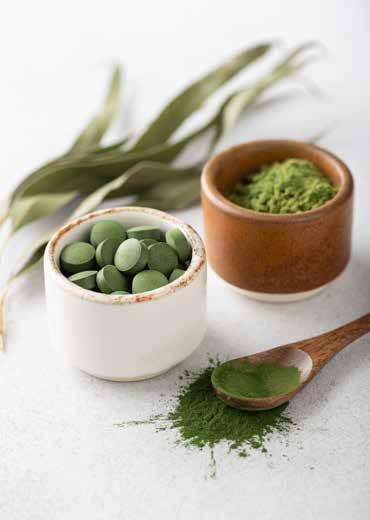
Whether it’s a BARF diet, canned food, prepared food, or feed, spirulina may be given to any kind of food. It may be eaten every day, but because it is so nutrient-rich, eating more than the suggested quantity might result in diarrhoea and stomach discomfort.
The dosage for canines and felines is 1/8 of a teaspoon for every 5 kg of body weight, or 0.125g per day. If possible, try to find organic spirulina, which is as clean and free of contaminants as possible. Additionally, it’s crucial to understand where it came from and other particular information, such as its pH (which should be above 10), and whether or not it contains heavy metals.
Side effects and risks










While studies are still ongoing about potential spirulina benefits, some of the risks are already clear. Always research the manufacturer and where a company sources its spirulina. Some companies grow spirulina in natural waterways without proper quality control. Unsafe growing conditions can contaminate spirulina with heavy metals, liver toxins, or harmful bacteria.
It’s also crucial to stick to supplements made for dogs. No, you shouldn’t buy a bag of human-safe spirulina and plan to split it with your furry best friend. One study reports toxicity after dogs consumed an OTC blue-green algae dietary supplement.
If your pup has an autoimmune disorder or is on other medications, you should never give your dog spirulina without consulting your vet. Too much spirulina may cause nausea, vomiting, thirst, diarrhea, weakness, fatigue, or rapid heartbeat in dogs.

World
in Microwave Moisture Measurement Hydro-Probe XT Hoppers, chutes, belt conveyors Hydro-Mix XT-FS Mixers, conveyors, Ducting System Hydro-Mix XT-EX Certified for use in ATEX, IECEx and NEC/CSA Hazardous Locations (Dust) Hydro-Mix HT-EX Mixers, conveyors, Ducting System, High Temperature Non Food-Safe available Non EX available Non EX available enquiries@hydronix.com Contact us for more details hydronix.com Hydronix-Petfood-Advert Mar 2023 215x140mm.indd 1 01/03/2023 13:02 International Petfood - August 2023 | 19 F
Leaders
Reduce environmental footprint of PetFood

Insect breeding
by Thomas Lefebvre, Biotech R&D Innovations Director, Ÿnsect, France
Apioneering breakthrough has been announced by the world-leader in insect production, Ÿnsect, which will further the development of more premium and environmentally sustainable insect-based pet foods. The Paris-based company has created a genotyping chip named Axiom® YNS_Mol1, a world-first for insect breeding and a major step in the evolution of selection of larvae lines to produce mealworm-based proteins.
This comes soon after Ynsect’s announcement, in early May, of the launch of a new insect-protein based B2B2C petfood brand: Sprÿng. Just as the human population increases, so do the number of pets in the world, putting the spotlight on health, climate and sustainability challenges. The use of insect-based proteins in pet food is recognised as an important step in reducing the environmental footprint of the pet food industry, and more and more manufacturers are turning to insects as ingredients in their products.
Antoine Hubert, CYO and co-founder of Ÿnsect, said: “Ÿnsect’s ambition is to contribute to the development of a new economic, social and sustainable model, which proposes new ways of consuming and producing, in order to meet the major environmental and climatic challenges of our era. For 12 years we have been innovating, with the goal of advancing the food industry and democratising the insect. Our genotyping chip for the Tenebrio molitor mealworm is a world-first for our industry and will contribute to the sustainable structuring of the entomoculture sector.”
Founded in 2011 by scientists and environmental activists, Ÿnsect is the global leader in the production of natural insect proteins and fertilisers. The Next40 member and B Corp certified company transforms mealworms into high-end, high-value ingredients for
pets, plants and humans. From its purpose-built, state-of-the-art farms, Ÿnsect offers an environmentally friendly, healthy and sustainable solution to meet the growing demand for protein and plant consumption. The company leverages pioneering proprietary technology protected by over 380 patents to produce mealworms in climate and biodiversity positive vertical farms, creating value chains aligned with the Paris COP21 +1.5°C and the EU’s Fit for 55 target.
Ÿnsect operates several production sites across Europe and the US and is currently commissioning its latest site, the world’s largest vertical farm in Amiens, France. The company exports its products worldwide.
The most recent addition to the Ynsect’s product portfolio is the petfood B2B2C brand: Sprÿng. Sprÿng offers easy-to-incorporate, neutral-tasting, odourless and light brown ingredients, designed with the needs of pet food manufacturers in mind. Made using the Molitor mealworm, the ingredients are natural, highly nutritional, and healthy, and can be used in the production of dry and wet pet food.
Genomic selection and its key benefits
Genomic selection today represents one of the most important levers of the ecological transition, making it possible to better characterise and enhance functional biodiversity. Faced with the urgency of today’s environmental challenges, it is one of the fastest and most effective tools we have to improve the sustainability of our food systems.
This application of genomics is already being implemented by seed companies to identify the varieties that are most resilient to global warming. The identification of insect varieties with traits adapted for optimal development while requiring less water or fewer inputs, will make it possible to reduce our environmental footprint even further.
This genotyping chip, developed with Thermo Fisher, represents a very powerful lever for the sustainable development of insect farms. Until now, producers have mainly focused on selecting
20 | August 2023 - International Petfood F
the bigger larvae, but this kind of overly restrictive practice of mass selection could lead to inbreeding and its detrimental consequences. For insect breeding in particular, it is essential for large-scale farms like Ÿnsect to select the best lines while ensuring real genetic diversity.
The genomic selection delivered by the Axiom® YNS_Mol1 chip makes it possible to achieve these objectives. It targets the genetic characteristics of interest while covering the entire genome to guarantee diversity. The selection is based on four families of phenotypes – or biological traits – linked to growth performance, reproduction, food conversion and disease resistance. In all, more than 4,000 individual insects were analysed to model this innovation.
Thomas Lefebvre, Biotech R&D Innovations Director, Ÿnsect, said: “The chip is made up of 679,205 markers (SNPs or Single Nucleotide Polymorphisms), distributed throughout the genome and covering more than 99 percent of the gene regions. These SNPs, representing modifications of a DNA base at a precise position between individuals of the same species, were selected to represent the entire genetic diversity of the insect population at our farms.”
A long term goal





















































Pierre Garrabos, Senior Key Account Manager AgriBusiness
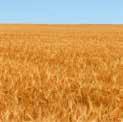
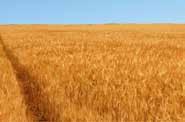
West of France at Thermofisher Scientic, commented: “Thermo Fisher’s Axiom® technology allowed us to genotype the Tenebrio Molitor as we traditionally do for livestock and field crops. This is the first time that a chip of this type has been designed for an insect, and it truly marks the insect’s entry into conventional breeding. The design of the chip, which consists of defining and
optimising its content in terms of markers, is the key step in the design. It requires close collaboration between the programme’s geneticists and the bioinformatics team. This development is a real step forward, made possible by all the partners in the ŸnFABRE project, a programme that is participating in an innovative way in the response to climate and environmental changes.”
ŸnFABRE is the world’s first industrial programme dedicated to mealworms genetics for genomic selection applied to large-scale insect breeding. It enables the creation of pioneering units for the selection and multiplication of high-performance and resilient insect lines and help to better understand insect biology. This project combines several areas of expertise and innovation for the development of phenotyping – the characterisation of biological traits – and genotyping – the identification of genome variations –tools, mathematical models and industrial processes.



Ultimately, ŸnFABRE will set up farms dedicated to genetics and having the potential to supply the Ÿnsect vertical farms with more performant lines of mealworms, which would increase their productivity by 15 percent per year while ensuring greater resistance to disease. The chip will also be made available to the academic world to encourage international research on Tenebrio molitor.

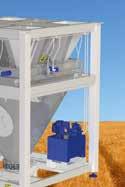

As far as the petfood industry is concerned; this chip – as well as the launch of Sprÿng – offers the potential for nutrient-rich yet carbon-friendly ingredients. The ability to select insects for such products, based on not only their ultimate nutrient content but equally their impact on the planet, is ground breaking technology paving the way for insect-based proteins to become more and more commonplace.
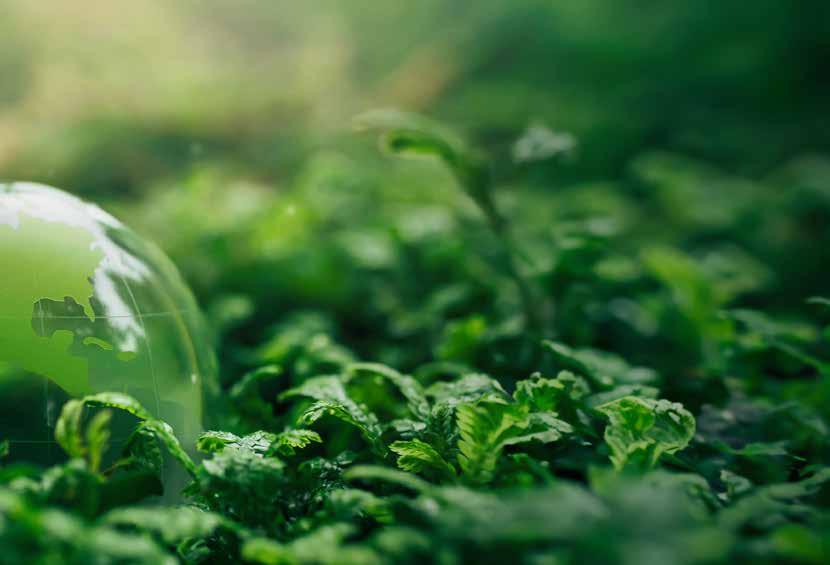
International Petfood - August 2023 | 21 F
BioCraft Pet Nutrition, founded in 2016, is the first and only biotech company developing cultured meat for the growing pet food market. Founder and CEO Shannon Falconer, MSc, PhD, left her post-doctoral research fellowship at Stanford University and turned down a prestigious academic scholarship to apply her scientific prowess to create meat-based, nutrient-dense pet food that doesn’t come at the expense of harming the environment or other animals.
In 2021, BioCraft introduced the first cultured meat product for the pet trade—cat treats made from mouse cells—a milestone for the company and the entire industry. BioCraft (formerly Because Animals) was the first to create a proprietary growth medium as an alternative to fetal bovine serum (FBS), helping reduce production costs by well over an order of magnitude and representing a key step towards commercial scale. BioCraft has developed the only truly environmentally sustainable and humane meat ingredient for pet food. It’s not a meat alternative; its meat produced in an alternative way that does not rely on conventional animal agriculture practices.
Today, the BioCraft team has grown to include a roster of PhD scientists, a veterinarian, and serial entrepreneurs, all focused on taking animals out of the supply chain by producing the healthiest, most environmentally sustainable and supply-chain stable meat for dogs and cats.


BioCraft is now focused on building partnerships with pet food manufacturers looking to incorporate cultured meat — which offers sustainability, animal welfare, quality and safety benefits — into their portfolios. According to BioCraft, cultured meat provides for a more uniform raw protein material that is less likely to be contaminated by common pathogens seen among traditional, animal-based proteins.
The company uses proprietary cell lines to grow meat — without the use of fetal bovine serum — in a controlled and pathogen-free environment. Cells are grown in a liquid medium of vitamins and minerals, according to the company. The finished product is
similar to a traditional “meat slurry” in consistency, which is familiar to pet food processors and can be used in a one-to-one replacement for animal-based meat in a variety of formulas, including dry kibble, wet food, treats and even fresh pet food formulas.
According to BioCraft, the company’s cultured meat products are not genetically modified and are free from GMOs, chemical and bacterial contaminants, antibiotics, pentobarbital, steroids or other hormones. The nutritional profile of BioCraft’s cultured meat ingredients stack up against animal-based meat, meeting all protein, key vitamin, fat and amino acid requirements, including taurine.
Location
BioCraft is located in both North America and Europe, with R&D performed via its subsidiary company, BioCraft Pet Nutrition GmbH in Austria. BioCraft investors include Draper Associates, SOSV, KEEN Growth Capital, Orkla Food Ingredients, Sentient Investment, Hack Capital and angel investors. BioCraft Pet Nutrition GmbH is a recipient of grant funding from the Austrian Research Promotion Agency (FFG).
Investors of BioCraft include Draper Associates, SOSV, KEEN Growth Capital, Orkla Food Ingredients, Sentient Investments, Hack Capital and angel investors. BioCraft Pet Nutrition GmbH is a recipient of grant funding from the Austrian Research Promotion Agency (FFG).
22 | August 2023 - International Petfood Industry PROFILE
Pellet Durability Tester

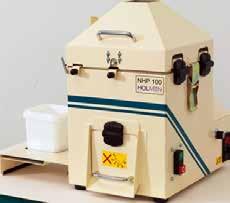




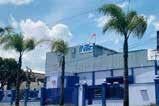








*Place your order for an NHP100 Portable Pellet Durability Tester between 1st June and August 31st 2023, and receive the optional Digital Scales Absolutely FREE!^ ^Visit for full details of this offer. www.tekpro.com/specialoffers



––
NHP100
International Petfood - August 2023 | 23
The Online Petfood School 2023
Organised by International Petfood School and Progressus Agrischools, the Online Petfood School starts August 24, 2023.

This course is designed to give you an in-depth review of the process of making pet foods. Simple and complex pet food and treat production are reviewed, overall plant design discussions, equipment used in production, and advancements of designs will all be discussed.
Topics will also cover typical ingredients used and how they are changing with discussions on quality testing, storage, preparation for use, and traceability. Also mentioned will be batching, mixing, and weighing both the dry and possibly wet ingredients used in modern-day pet foods.
There are many different ways of pet food production but the major method, extrusion cooking, is discussed completely with preconditioning and extruder barrel design discussions. The discharge end of the extruder yields the shape and has an influence on the product itself is reviewed with a discussion on possible situations that develop and how to correct these.
Dryers, both vertical and horizontal are reviewed with an explanation of the value of accurate drying and
how these devices are becoming more energy aware including possible solutions to drying issues. Coating methods reviewed including accuracy discussions and the importance of cooling before packing. Final product review, packaging, and storage round out this comprehensive course on pet food production.
The live online webinars will consist of Two and a half hours per week, for six weeks, and includes an additional in-person session at this year’s VICTAM LatAm in São Paulo, Brazil. Once the course is completed, attendees will receive a certificate, and the opportunity to watch the sessions on-demand. It will be available in two time zones, Europe & Asia (8am CET) every Thursday, and U.S & Latin America (10am Chicago) every Friday.

If you have an interest in pet food production from the point of view of owning a company, working in a production facility, or a supplier to the industry who wishes to know more about the process, this course will get you started in the right direction. The course is also designed for a review to those in the industry who wish to learn what is new and the direction developments are headed for the production of pet food.

TRAINING Industry Training
Your industry training platform www.onlinemillingschool.com Learn more – Learn onsite Enroll in the 6-week Course The Online Petfood School starts August 24, 2023
Troubleshooting
Extruder barrel temperature
Temperature in the extruder is what is considered to be the factor that eliminates the bacteria in petfood for safe handling by pet owners. Data shows that the required temperature is 77oC for bacteria elimination with elevated temperatures, 125oC, killing bacteria spores yeast spores and others. Achieving this temperature continuously is done by use of heat, pressure and frictional development.
Preconditioning starts the process by adding water and steam to the mash. Water is added to achieve elevated capacities and for smooth extruder operation. It also increases the thermal conductivity of the mash when steam is added. The water assists in transfer of the heat. The goal is to have the feed temperature elevated to some point prior to the extruder, and the standard range is usually up in the 80 to 95oC range. Temperature measurement is usually at its discharge taken with care as free steam in the cylinder can cause higher reading than actual mash temperatures.
The extruder barrel finishes the job by elevating the temperature to a confirmed level prior to discharge. Historically testing showed salmonella was eliminated under correct extruder operating ranges. Verifying this and knowing exactly when the product is correct or not is the fun part. When starting an extruder and shutting it down the point at which the temperature is correct is at some point after start up and a point before beginning shutdown. Knowing this historically the food was not kept or bagged until the operator said it was good. Either by not sending downstream or by marking the point product was good when entering the dryer. This was done by observation and experience, not confirmed scientifically.
Control systems, temperature measuring devices and extruder barrel components were developed as this process advanced in order to understand and more precisely control the system. The reason was initially the product bypassing the system until it was judged worthy to advance was costly over time. Money is made on product going out the door not rework or waste. Temperature probes were placed in selected extruder and conditioner locations. These reported back the conditions, were they correct? Testing showed where in the extruder the cold spots were thus the critical areas where temperatures needed to be measured. The probes themselves were redesigned until they reported in a reliable fashion.
Devices were developed to control the passage through the extruder to ensure temperatures were reached. The end of the extruder where the heat and pressure are the highest, a slight increase in restriction can greatly elevate the final temperature as the pressure would increase and thus the frictional development creates temperature elevation. Obviously worked in reverse also, open it up some temperature might go down but if still in correct operation range you might slightly increase the capacity. These same devices also have a great effect on density of the product as all of the factors go hand in hand to make an extruded product. When in harmony and all is designed and working as a team so to speak in the extruder is controllable and adjustable to ensure making a clean safe product at high capacities.
Previously on Troubleshooting...
1. Density
An examination of product density and its relationship with moisture levels, heating, cooling feeder screw rate and automation.
2. Non-uniform and rough appearance
A guide to understanding the science involved in improving the art of making products of all the same size.
3. Extrusion dies
This article takes a look at aspects of the process including high, medium and low shear as well the adjustments required when producing feed for small mammals.
4. Dryers
The dryer is without a doubt one of the machines in the system which greatly impacts the bottom line.
5. The extruder barrel - Part 1
Forming extruders are used for some select products – thus this part of the discussion centres on single and twin designs.
6. Cook in the extruder barrel – part 2
As discussed last month, the extruder barrel has a number of functions, but the main goal is to finalise the cook, yield the desired shape with the density target.
7. Coating
The coating process has a few areas of importance, with this edition of ‘Troubleshooting’ exploring the most important of these.
8. Expanded cat food
Dry expanded cat food production is similar to dog food production, but there are some differences, with this edition exploring a choice selection of these.
9.
Extrusion during operation
This month we discuss steam input into the conditioner. During the water addition process, the steam is usually in the two-bar range.
TROUBLESHOOTING
International Petfood - August 2023 | 25
Autolysed yeast!
Innovations this month August 2023
This month’s Production Showcase section features equipment and ingredients that will help in the production of petfood, taking you right from the recipe book, right up until until your product is ready to leave your factory door.

If you would like your product or service to appear on this page in a future edition of International Petfood magazine, then please contact us at editorial@perendale.co.uk

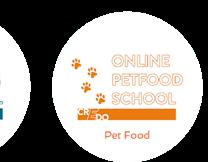
Ekomex KBM-1000 Frozen Block Pallet Crusher by Windsor
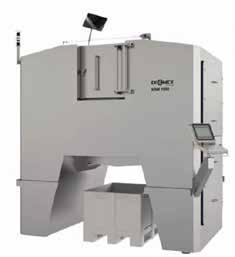
Highly industrial machine for crushing frozen blocks stacked in pile on euro palette size.
The construction of the machine and the cutting chamber enables loading of up to 40 blocks simultaneously with a total weight of up to 800 kg. The machine is intended in particular for large meat, pet fod and fish plants, for grinding frozen blocks of meat, fish, cheese, vegetables or other food products with standarized dimensions. The best performances can be achieved with a product temperature in the range of -15 to -20 °C. Crushing is carried out by means of two slow-rotating, very durable tooth rollers, into the zone of which the blocks fall gravitally after being lifted by means of column loading. Then, through the appropriate construction of the head and counter teeth, the product is pulled in and broken into a structure similar to the width of the teeth in the range from 35 to 70mm. After grinding, smaller pieces of the frozen raw material fall into a buffer, a big-box container or a conveyor for transfer to further, final grinding, mostly on grinders, cutters or further processing on mixers and production lines. www.windsorfoodmachinery.com
PRODUCTION
CeF
–
i ® pro
|
|
|
|
Visit our website: leibergmbh.de Leiber GmbH | Hafenstraße 24 | 49565 Bramsche Germany | info@leibergmbh.de Best in bioavailability! 210223_International Petfood_90 mm x 270 mm.indd 1 21.02.23 08:41 26 | August 2023 - International Petfood
free amino acids & nucleotides
promotes intestinal integrity
stimulates metabolism
enhances palatability
FOCUS
Screw feeder weighing machine by PLP Systems
Through different weighing systems, which can be the weighing screw or weighing belt combined with hoppers designed according to the customer’s needs, we can create batch dosing systems to handle any type of material with different quantities.
Screw
feeder weighing machine
The weighing screw machine, entirely made in stainless steel is complete with N°3 load cells and an encoder for the detection of weight and speed.
According to the clients need, the weighing screw can be customized and the diameter of the screw and the rotations can be modified.
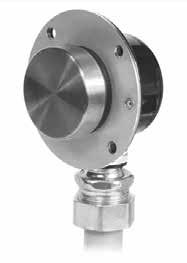
The weighing screw automatically can totalize the quantity of the dosed product, indicating the instantaneous delivery rate and the frequency output www.plp-systems.com
Vertica by Bühler
One of Vertica’s major advantages is that it doesn’t require independent aspiration – the integrated air circulation in the feeder is all that is needed, keeping capital investment and operating costs low. Along with this the vertical hammer mill can reduce energy consumption by as much as 25 percent in comparison to horizontal hammer mills. The equipment’s small size means that it can easily fit into an existing space or can be planned to fit into a new plant without trouble.
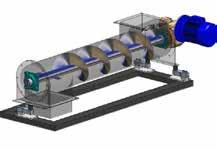

The east access to the rotor, hammers and screens means that you can ensure that the machine is always well sanitised and any maintenance is easily performed. The two handed safety mechanism the Vertica is equipped with ensures that it cannot be operated improperly protecting both the machine and worker.
www.buhlergroup.com

Touchswitch by 4B Group
The Touchswitch is an electro-mechanical limit switch with no moving parts, which detects tracking and misalignment problems on bucket elevators and conveyors. When a belt misaligns or a pulley moves over and contacts the sensor, the built in solid-state electronic circuitry detects the lateral force of the belt or pulley and activates a voltage free solid state relay output. This output signal is used to immediately alarm and ultimately shutdown the machine.
The face of the sensor is made from hardened and annealed stainless steel, not soft brass or aluminium, so wear life is longer when a belt contacts it. The Touchswitch is not affected by dust or material build up and will still work when completely covered by material. An external test wheel allows for quick and simple sensor/system testing. The sensors are usually installed in pairs on opposite sides of the machine. www.go4b.co.uk
PEGASUS® 5-IN-1 MIXER by Dinnissen
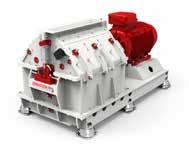
The Pegasus® 5-in-1 Mixer is a true multiprocessing machine. It allows you to mix, vacuum coat, dry, germinate and acidify your product. The mixer produces flavored products with a high hygiene requirement and a fresh-sour taste sensation, such as tea, cereals, (crispy) sweets, and snacks. In sectors such as the food industry, there is an increasing need for multiprocessing machines. Production must become ever faster and more efficient, to produce the best possible product using the least number of materials and resources possible. By combining several process steps in one machine, the Pegasus® 5-in-1 mixer saves on both cost and energy. The dual axis mixing mechanism airily tosses powders, pellets and granules during mixing. Then the finely atomized liquid particles mix homogeneously with the dry raw materials. The 5-in-1 mixer can also dry, germinate and acidify the product. No transport is needed between the different process steps, saving time and manpower.
www.dinnissen.com
SEE YOUR PRODUCTS IN THIS MAGAZINE If you produce a product that you think we should feature in International Petfood magazine, please get in touch To be considered for inclusion in the magazine please; Email: editorial@perendale.co.uk Include 75 words about the product along with a high resolution image and a web link to more information about the product in your email
Your industry training platform www.onlinemillingschool.com Learn more – Learn onsite Enroll in the 6-week Course The Online Petfood School starts August 24, 2023 International Petfood - August 2023 | 27


2023 August
4-5
Pet Trade Fair

Dehli, India www.iiptf.in
16-18
Pet South America

Sao Paulo, Brazil
www.petsa.com
16-18
Superzoo


Las Vegas, USA www.superzoo.org

Industry Events
3
The Online Milling School LIVE! Sao Paulo, Brazil www.onlinemillingschool.com
3-4
FEED MILLING MAXIMISED



Sao Paulo, Brazil
www.internationalpetfood.com/event/pet-aqua-feed-productionconference/
12-15
Petzoo Eurasia

Istanbul, Turkiye, www.petfuari.com


17-18
Animal Health, Nutrition, and Technology Innovation Asia



Tokyo, Japan l www.animalhealthlatam.com
25-27
Petfair SE Asia

Bangkok, Thailand www.petfair-sea.com
2023
November
19
Aquafeed Extrusion and Nutrition Conference Abu Dhabi www.internationalpetfood.com
2023 September
6-8
VIV Nanjing
Nanjing, China www.vivchina.nl
13-14
Animal Health, Nutrition, and Technology Innovation LatAm





São Paulo, Brazil
www.animalhealthlatam.com
26-28
PPMA Show

Birmingham, UK www.ppmashow.co.uk
2023 October
1-2
PATS Telford

Telford, UK
www.patshow.co.uk
2-5
VICTAM LatAm
Sao Paulo, Brazil www.victamlatam.com
3-4
Pet-Aqua Feed Production Conference
Sao Paulo, Brazil
www.internationalpetfood.com/event/pet-aqua-feed-productionconference/
2023
December
4-5
Petcare Innovation USA Los Angeles, USA www.petcareinnovationsummitusa.com
2024 January 30- 1 IPPE Atlanta, Georgia, USA www.ippexpo.org 2024 May 7-10 Interzoo 2024 Nuremberg, Germany www.interzoo.com International Petfood - August 2023 | 29
VIV TÜRKİYE 2023
by Mehmet Uğur Gürkaynak, International PetFood, UK
VIV TÜRKİYE, the focal point of the feed industry opened its doors for the 10th time with the organization of HKF Trade Fairs under the license of VNU Exhibition Europe on July 6th in Istanbul Expo Center. This year the fair hosted more than 281 companies and more than 15,000 buyers came as visitor from the poultry sector. 10th International Trade Fair for Poultry & Technologies VIV TÜRKİYE 2023 was officially opened following the speeches of Ahmet Yavuz Karaca, Director of Istanbul Directorate Of Provincial Agriculture And Forestry, Prof. Dr. Rüveyde Akbay, President of World’s Poultry Science Association (WPSA) Turkish branch, Naci Kaplan, Chairman of Association of Poultry Meat Producers and Breeders, M.Ülkü Karakuş, Chairman of Turkey Feed Manufacturers Association, İbrahim Afyon, Chairman of Turkish Egg Producers Association, Prof. Dr. Pınar Saçaklı , Chairman of Veterinary Poultry Association, Ramazan Bayhan, the President of Association of Turkish Animal Health Industry, Burhan Sakkaoğlu, Secretary General of ASÜD , Ahmet Yücesan, Chairman of ETBİR and Hayati Can, Chairman of SOSIAD, President of Fishery and Animal Products Exporters Association, Müjdat Sezer, The President of Union Poultry of Kazakhstan, Ruslan Ismailovich Sharipov.
International Buyer Delegations were at VIV Türkiye This year the fair welcomed top buyer delegations, from Cameroon, Senegal, Niger, Lebanon, Jordan, Palestine, Oman, Kuwait, Bosnia Herzegovina, Tunisia, Algeria,
Morocco, Uzbekistan, Kazakhstan, Iran, Georgia through an organisation of the Ministry of Commerce of the Republic of Türkiye and the guest of HKF Fairs. The main purpose of the buyer delegation program was to hold B2B meetings with the exhibitors.
Future predictions of the leading associations of Türkiye:
‒ Turkish Feed Manufacturers Association / Mr. Ülkü Karakuş: In the last 10 years, compound feed production has increased by 7 percent every year, but it is striking that this growth rate was higher in previous years. Last year, 27 million tonnes of compound feed were produced in our country. Our country ranks 7th in the world and 1st among EU countries in terms of compound feed production. The development of our feed industry is directly related to our general economic policies and developments in the world, as well as agricultural policies. The pandemic and the Russia-Ukraine war have adversely affected social life and trade, leading to the deterioration of some balances. Stopping this war as soon as possible will relieve the world markets, increase the trade volume, make new investments and provide some new developments for the benefit of our country. Thanks to the measures taken by our government through TMO, excessive increase in grain prices is prevented and feed prices are

30 | August 2023 - International Petfood E
Indonesia International Pet Expo, known as IIPE, is the largest pet exhibition event in Indonesia held by PT. TEMALI INDONESIA. From 2017 to 2022, IIPE is routinely held at ICE BSD. Even during the pandemic, IIPE still held its events online. IIPE provides a place for pet lovers, experts and pet suppliers to gather. From cats, dogs, to exotic pets, IIPE exhibits various types of pets. Not only that, activities such as competitions, seminars, consultations, pet shows, as well as pet needs such as food, medicine, and other necessities are also available at IIPE. This year, IIPE is back on 1, 2, 3 September 2023 with the theme of Wonderful Indonesia.


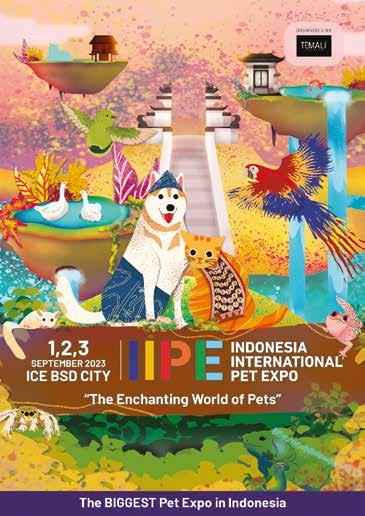
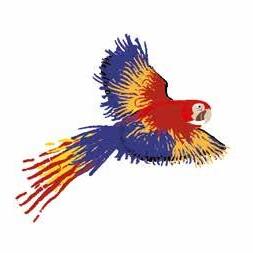















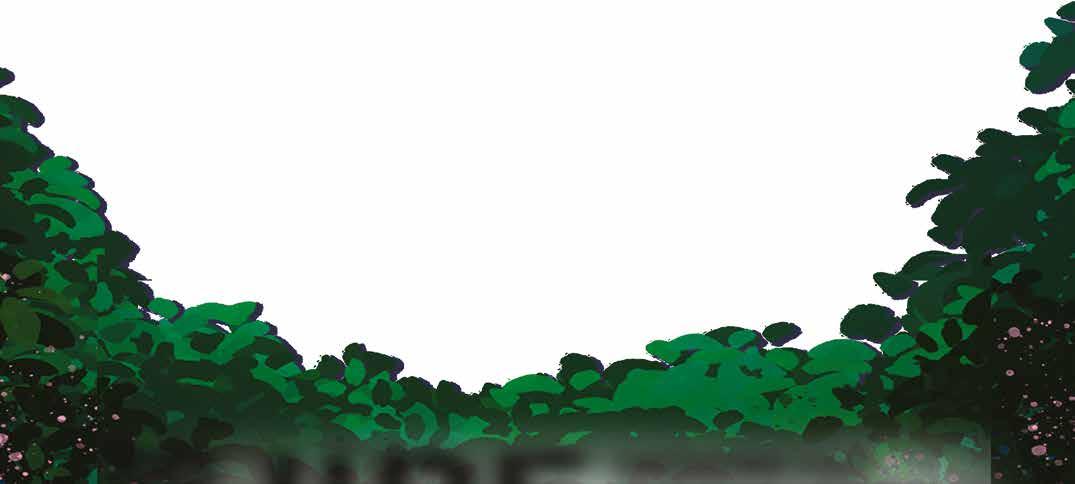
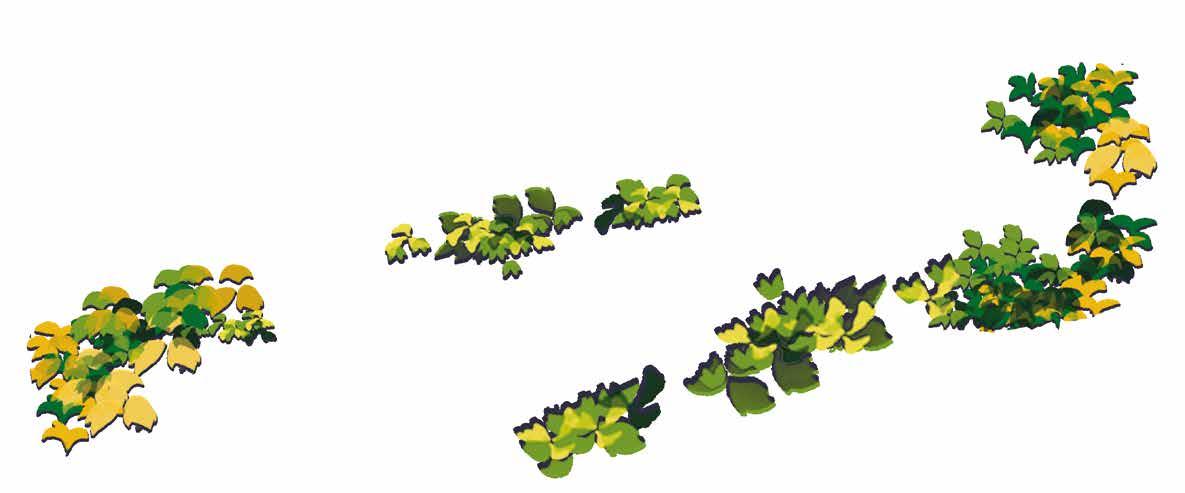






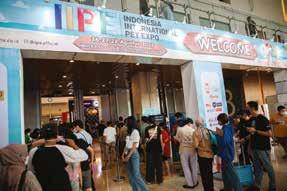



following a favourable course with the effect of intense competition in the market. Similarly, we anticipate that investments in animal production will increase, and the growth trend of the feed industry will continue in the coming period due to the regulation of the market, the elimination of the mentioned problems and the increasing need.
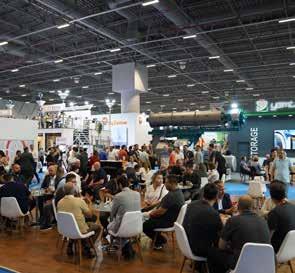
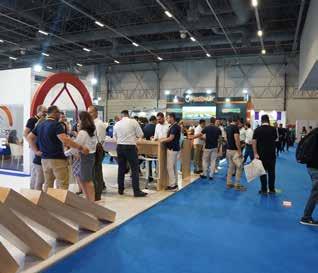
‒ Veterinary Health Products Manufacturers Association (VİSAD) / Mr. Ramazan Bayhan:

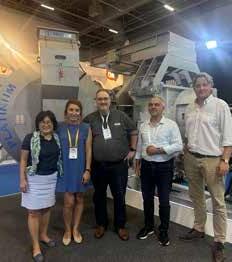


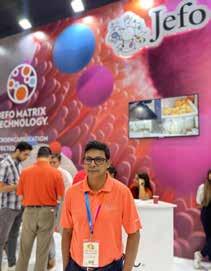
The demand for veterinary health products is expected to continue to increase due to various factors. These include a growing global population, increased pet ownership, increased awareness of animal health and welfare, and the expansion of the livestock industry to meet the demand for animal protein. The veterinary healthcare products industry has witnessed advances in technology such as the development of innovative pharmaceuticals, vaccines, diagnostics and digital health solutions, will continue. These technological advances can increase the efficacy, safety and convenience of veterinary treatments and improve overall animal health outcomes. Similar to the trend in human medicine, more and more emphasis is placed on preventive health care for animals. Veterinary healthcare products that promote preventive care, such as vaccines, parasite control products, and nutritional supplements, are expected to gain traction as pet owners and animal producers prioritize proactive measures to protect animal health and prevent disease. Regulatory control and standards for veterinary healthcare products are likely to become more stringent. Governments and regulatory agencies can enforce stricter rules to ensure the safety, quality and effectiveness of these products. Compliance with these regulations will be crucial for manufacturers and importers to maintain market access and consumer confidence. The concept of One Health, which recognizes the link between human, animal and environmental health, is becoming increasingly recognised and important. This awareness is likely to encourage the development of veterinary healthcare products that address zoonotic diseases (diseases that can be transmitted between animals and humans) and contribute to the overall health and well-being of both animals and humans.
 Kabir Chowdhury, Sales director, Jefo
Begum Usta, Yemmak and Nick Mouthaan, Victam Corperation with our team
Kemal Burak Kayhan, Bea Van Deynse, Arpad Zsok & Deniz Gungoroglu of Bestmix Software
Taner Alapala, Ekrem Acar of Alapala with our team.
Kabir Chowdhury, Sales director, Jefo
Begum Usta, Yemmak and Nick Mouthaan, Victam Corperation with our team
Kemal Burak Kayhan, Bea Van Deynse, Arpad Zsok & Deniz Gungoroglu of Bestmix Software
Taner Alapala, Ekrem Acar of Alapala with our team.
E
Marco Prati, PLP Systems and Nick Mouthaan, Victam Corperation
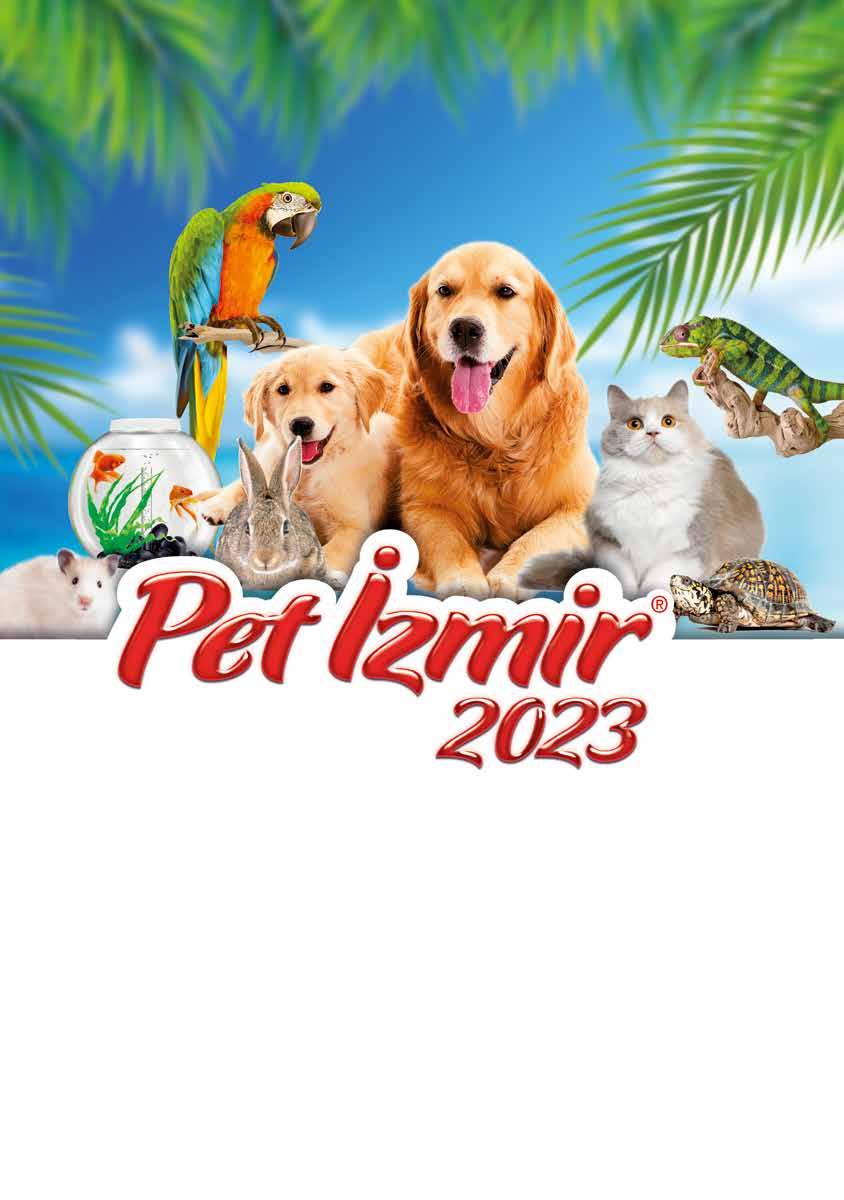
İzmir / TÜRKİYE 28 September - 1 October 2023 7 th International İzmir Pet Products, Materials and Accessories Suppliers Exhibition “THIS EXHIBITION IS ORGANIZED UNDER THE SUPERVISION OF THE UNION OF CHAMBERS AND COMMODITY EXCHANGES OF TÜRKİYE (TOBB) IN ACCORDANCE WITH LAW NO: 5174.”
Organizer Exhibition Centre Supporters
Main Sponsor
PPMA SHOW 2023

PPMA Show takes place on 26 - 28 September 2023, is the UK’s largest event dedicated to state-of-the-art processing and packaging machinery, so there’s every reason to visit in September.

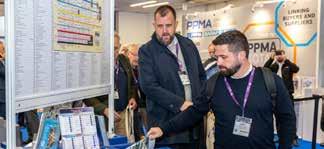
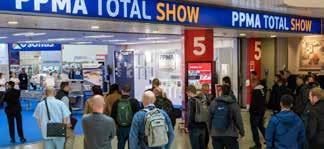
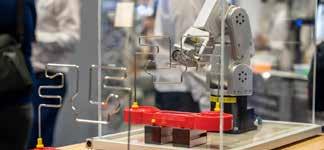
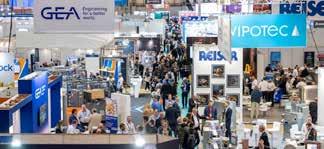
You’ll have face-to-face contact with over 300 exhibitors, comprising over 2,650 brands. There will be a host of new product launches and the latest technological innovations that have been developed over 35 years of successful shows. PPMA Show is the largest processing and packaging machinery exhibition in the UK. Showcasing the very latest in processing and packaging machinery, robotics and industrial vision systems, coupled with the latest innovations in materials, containers and packaging design. It covers the full spectrum of the industry, including food, beverage, pharmaceuticals, household products and toiletries, building materials and supplies, pet care, micro-brewery and distilleries, FMCG, as well as contract packers and more.
Visitors also have the chance to network, source new ideas and solutions, and meet with potential new suppliers, influencers and technical experts, all under one roof. Every aspect of the production line will be represented, from labelling, filling and packaging to processing, robotics, automation and industrial vision systems. Organised by the Processing and Packaging Machinery Association (PPMA), which comprises the PPMA, British Automation
& Robot Association (BARA) and the UK Industrial Vision Association (UKIVA). PPMA Show exhibitors showcase the latest in machinery and ancillary products. Browse products supplied by our exhibitors on our dedicated page to identify solutions to drive efficiency and reduce waste within your workplace.
Exhibitors benefit from:

• Exposure to 6920 quality visitors from a broad range of sectors
• Competitive stand space pricing, offering the very best value to members and non-members
• Networking opportunities with major manufacturers


• VIP status for your special guests to enjoy the exclusive VIP Lounge
• Full suite of advertising and marketing through Digital & Print media to our 70,000+ industry contacts
There is no better time to visit this unique, and informative experience, we look forward to seeing you there!
SCAN THE QR CODE TO REGISTER 34 | August 2023 - International Petfood E
PPMASHOW.CO.UK



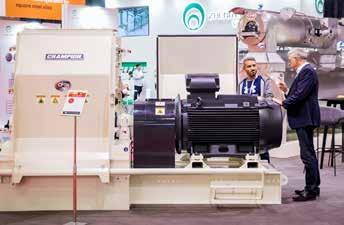




OCTOBER
NEW! SÃO PAULO BRAZIL
3-5
2023
ANIMAL
PROCESSING INDUSTRIES
Animal Feed
Agua Feed
Pet food
Poultry feed
Flour milling
Grain processing,
& storage MORE INFORMATION � NICKMOUTHAAN@VICTAM.COM � +31 6 2126 4398 � WWW.VICTAMLATAM.COM
INFORMATION
the QR code or visit victamlatam.com
LATIN AMERICA’S LARGEST DEDICATED EVENT FOR THE
FEED AND GRAIN
•
•
•
•
•
•
handling
MORE
Scan
FOUNDING COMPANIES
insights Counting down
October is approaching! The countdown has started for the first Victam LatAm event in São Paulo, Brazil that will take place from 3-5 October 2023! From process technology to ingredients and additives, it is all there.
The ingredients and additives market is a rapidly growing industry that is driven by the increasing demand for animal protein. The world population is growing, and with it, the demand for meat and dairy products. This demand drives the need for animal feed, which is a key component of livestock production. As the animal nutrition market evolves, there is a focus on improving animal health and performance, alternative ingredients, reducing the environmental impact of livestock production, and increasing efficiency and profitability for farmers.
Let's talk "ingredients"!
Feed additives, such as amino acids, enzymes and prebiotics are of importance in improving the nutritional quality of animal feed. In Latin America, the animal feed additives industry is particularly important due to the region's large and growing animal protein sector. According to a report by Grand View Research, the Latin America animal feed additives market size was valued at USD 6.5 billion in 2020 and is expected to grow at a compound annual growth rate (CAGR) of 3.1 percent from 2021 to 2028.
Following a report by the Brazilian Association of Animal Protein (ABPA), Brazil is the world's largest exporter of chicken meat and the fourth-largest exporter of pork, with exports of these products totaling 4.2 million tonnes and 1.1 million tonnes, respectively in 2020. The report notes that the Brazilian animal protein sector is a critical component of the country's economy, generating over 7 percent of the country's gross domestic product (GDP) and providing employment to over 4 million people. These data demonstrate the critical role that ingredients play in the animal nutrition industry and the need for continued innovation and development in this field.

Ingredient companies Victam LatAm 2023
The potential of the Brazilian and Latin American market attracted already over 150 companies as exhibitors at Victam LatAm 2023. Above the principal companies for feed ingredients
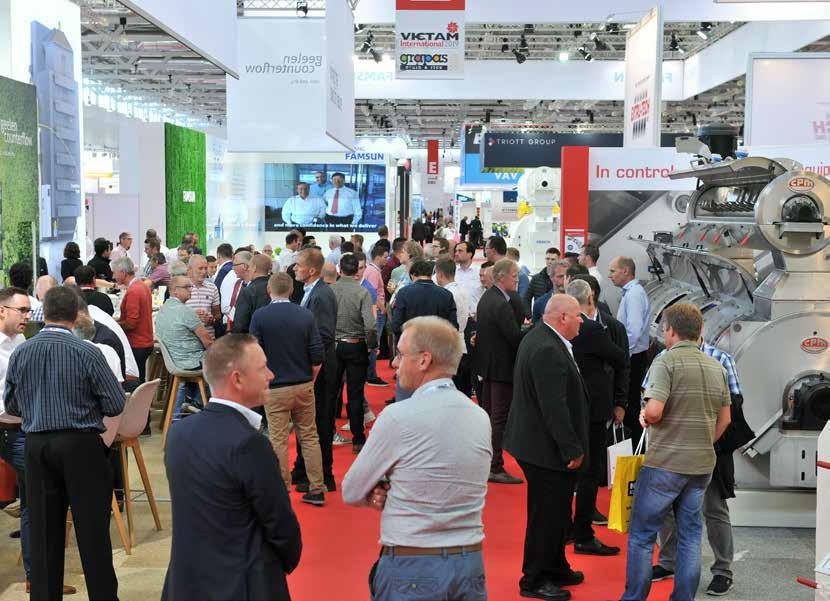
and feed machinery, Victam is also happy to welcome ingredient companies, such as Evonik, for instance.
Evonik is a leading player in the animal nutrition market and will be joining Victam LatAm 2023 with a stand in Latin America. The company is continuously developing new products and solutions that meet the evolving needs of farmers and the animal nutrition industry. With a focus on research and development, Evonik is well-positioned to help farmers produce high-quality animal products in a sustainable and efficient way. Evonik already has a significant presence in Latin America, with operations in Brazil, Mexico, Argentina, and Chile. The company's animal nutrition business in Latin America is focused on providing innovative and sustainable solutions that meet the needs of local farmers and the animal nutrition industry.
In Brazil, where the event will be held, Evonik operates a largescale production facility that produces MetAMINO, Biolys, and other animal nutrition products. Brazil is a key market for Evonik, as it is one of the world's largest producers of animal protein. The company has a strong local team in Brazil that is focused on providing technical support and expertise to customers.
In Mexico, Evonik has a sales and technical support team that works closely with local customers to provide innovative and sustainable animal nutrition solutions. The company's focus in Mexico is on improving animal health and performance, reducing the environmental impact of livestock production, and increasing efficiency and profitability for farmers.
In Argentina, Evonik has a strong presence in the animal nutrition market, with a focus on providing amino acid solutions for poultry and swine diets. The company's products are used by many of the leading animal nutrition companies in the region.
In Chile, Evonik is focused on providing innovative and sustainable solutions for the aquaculture industry. The company's products are used in salmon and trout diets, and are designed to improve animal health and performance, reduce feed costs, and increase profitability for farmers.
Overall, Evonik's animal nutrition business in Latin America is focused on providing high-quality, sustainable solutions that meet the evolving needs of local farmers and the animal nutrition industry. Victam LatAm 2023 will be the ideal opportunity for Evonik to maintain current relations in the region and develop new ones.
36 | August 2023 - International Petfood
Interview Evonik



Victam reached out to Henrique Brand - Strategic Marketing Manager for Specialties Nutrition at Evonik, to inform us on Evonik “Insights”!

In recent years what are the most critical technological developments that you have witnessed in the nutrition sector?
In recent years, the animal nutrition sector has been seeking viable alternatives to the use of antimicrobials in feed. These alternatives range from the use of additives such as probiotics, postbiotics and organic acids, to the application of nutritional concepts such as the reduction of crude protein in diets and supplementation with functional amino acids.
What are your sustainability focus areas?
Reducing the carbon footprint of our production plants and helping our customers reduce environmental contamination with the use of amino acids, nutritional and animal health additives.
You present yourself as a leader in innovation. Can you tell us a little bit more about your innovation(s)?
Through partnerships with research centers and universities around the world, we have been able to develop new products and technologies that will be applied in animal production in the coming years.
For example, we have a research line to define the amino acid requirements for animals raised under heat stress. In this way, we can help our customers optimise their production and reduce their losses due to climatic factors.
We are pleased to have you on board for Victam LatAm, what potential do you see in Latin America?
Latin America is a region with many opportunities for agribusiness and this has made the world's largest companies interested in investing in the region. With an abundance of land and water, the region offers all the necessary factors for the efficient and sustainable production of animal protein. Therefore, Evonik is present in the region to be part of the production chain offering high performance solutions to meet the demands of producers.
Conferences in São Paulo, Brazil
Perendale Publishers has partnered with VICTAM to host three conferences during the LatAm event in São Paulo, Brazil. On October 3-4, there will be two half-day conferences held, to hear from industry experts about Aquaculture feed and Petfood production. The ‘Pet-Aqua feed production conference’ covers these two areas that utilise similar techniques, and is designed for understanding the process, learning what is new, and possibilities in the area of pet and aquatic feed production.

As an additional session for our Online Milling School, the ‘OMS-Offline: Trouble shooting for all (Milling-Aqua-Pet)’ will take place on October 3 and will comprise of a discussion panel and a Q&A session. During this Off-Line Session, we will be awarding Certificates of Attendance to those who have completed one of the 2023 six-week courses and who are in attendance.

The ‘Feed Milling Maximised’ conference takes place on October 5. The seminar presents keynote presentations along with eight quick-fire updates on equipment and technologies used in modern-day feed milling that improve efficiencies while maximising output.
To register, visit https://victamlatam.com/en-us/conference-program/conferences

E


















VIV MEA 2023 ABU DHABI, U.A.E. 20-22 NOVEMBER INTERNATIONAL TRADE SHOW FROM FEED TO FOOD FOR THE MIDDLE EAST AND AFRICA WWW.VIVMEA.NL Register your visit now! Powered by: Co-located with: Organized by: VNU EUROPE WWW.VIV.NET Partner of
Bagging systems
FAWEMA +49 2263 716-0 www.fawema.com

Bulk storage
Silo Construction & Engineering +32 51723128 www.sce.be
Symaga +34 926640475 www.symaga.com
TSC Silos +31 543 473979 www.tsc-silos.com

Van Aarsen International +31 475 579 444 www.aarsen.com
Computer software

Inteqnion +31 543 49 44 66 www.inteqnion.com

Van Aarsen International +31 475 579 444 www.aarsen.com
Coolers & driers
Extru-Tech +785 284 2153 www.extru-techinc.com

FrigorTec GmbH +49 7520 91482-0 www.frigortec.com

FAMSUN
+86 85828888 www.famsungroup.com



Van Aarsen International +31 475 579 444 www.aarsen.com
Dosing
Van Aarsen International +31 475 579 444 www.aarsen.com
Elevator buckets
4B Braime +44 113 246 1800 www.go4b.com


Tapco Inc



+1 314 739 9191 www.tapcoinc.com
Elevator & conveyor components
4B Braime
+44 113 246 1800 www.go4b.com
Equipment
Tapco Inc +1 314 739 9191 www.tapcoinc.com
Van Aarsen International +31 475 579 444 www.aarsen.com
Hammermills
Dinnissen Process Technology +31 (0)77 467 35 55 www.dinnissen.com
Inspection
Dinnissen Process Technology +31 (0)77 467 35 55 www.dinnissen.com
Extruders Almex +31 575 572666 www.almex.nl






IDAH +866 39 902701 www.idah.com

Feed milling
Dinnissen Process Technology +31 (0)77 467 35 55 www.dinnissen.com
PLP +39 05 23 89 16 29 www.plp-systems.com
vibronet-Gräf GmbH & Co.KG +49 6441 62031 www.vibronet.com

Zheng Chang +86 2164184200 www.zhengchang.com

Feed Mill Automation
Van Aarsen International +31 475 579 444 www.aarsen.com


Grain handling systems Symaga +34 926640475 www.symaga.com


Tapco Inc +1 314 739 9191 www.tapcoinc.com
Labelling
Minebea Intec +44 121 779 3131
www.minebea-intec.com

Minebea Intec +44 121 779 3131 www.minebea-intec.com
Laboratory equipment

Tekpro +44 1692 403403 www.tekpro.com

Packaging
Dinnissen Process Technology +31 (0)77 467 35 55 www.dinnissen.com
Sifters
Dinnissen Process Technology +31 (0)77 467 35 55 www.dinnissen.com
Weighing
Minebea Intec +44 121 779 3131 www.minebea-intec.com
Yeast products
Minebea Intec +44 121 779 3131 www.minebea-intec.com



To get your company included in the market place, please contact the PetFood team on +44 1242 267700 or writes to tutit@perendale.co.uk.

International Petfood - August 2023 | 39
The Market Place lists leading manufacturers of equipment used for the production of petfood. To be included in the Market Place please contact Tuti Tan at tutit@perendale.co.uk.
the interview
Myriam Chang
CFO, Nutrition Technologies, Malaysia
Myriam Chang is Nutrition Technologies’ CFO. She joined the company in 2023 with over 20 years of experience in Finance in New York, London and Singapore, with senior roles as an investment professional in debt and equity. Myriam started her career at Credit Suisse New York and spent thirteen years at CS’s New York and London offices mainly as senior Trader in the Global Financing Group and as a fund portfolio manager focusing on emerging markets. Prior to joining NT, Myriam was Managing Director of Mandala Impact Capital, a private equity fund focused on the ag and food sectors in India and Southeast Asia, serving as board director for several of the fund’s portfolio companies. Having been born in Mexico, Myriam is a native Spanish speaker and has a B.S. in Economics from the Wharton School of the University of Pennsylvania.
You have a rich career in the industry. What initially lead you to this field?
I started my career in Finance, first covering a wide range of sectors but more recently as a Private Equity investor focused on the agriculture and food industries. This allowed me to see first-hand the urgent need to tackle food security and climate risks by finding sustainable alternatives to our existing food systems. I believe that an insect-based solution is the most scalable and sustainable solution to these challenges, particularly when rearing black soldier flies in conditions as close to their natural habitat as possible. The BSF industry has also matured significantly over the past few years, with companies like Nutrition Technologies reaching industrial scale and successful commercialisation. Finally, I am particularly excited at the pioneering research NT has been conducting on BSF and insect bioconversion with new and innovative products in the pipeline, all of which could prove ground breaking for animal (and plant) nutrition and health.
Is black soldier fly the future of petfood? To what extent is it a sustainable solution?
Petfood formulated with black soldier fly has shown to have multiple nutritional and functional benefits, and importantly, its taste is not only accepted, but preferred by pets. Insectbased petfood also has a considerably lower carbon footprint, especially when using black soldier fly which have been reared and manufactured in the tropics in a low-energy and circular process – such as the one used by Nutrition Technologies. I absolutely believe that in the near future, BSF petfood will be a mainstay of the industry, and the easy go-to choose for the sustainability-conscious consumer.
What are opportunities for solution innovations that support sustainable goals in current industry?
Nutrition Technologies’ biotech platform and R&D capabilities allow for the development and commercialisation of organic compounds traditionally only obtained via unsustainable synthetic means. Innovation on this front will result in new products for animal and pet nutrition, animal health, and animal medicine. All of this produced sustainably and with benefits for both pets and the environment.
NT is also active in exploring opportunities for valorising more waste streams using this technology, which will result in additional positive environmental and social Impact, as well as reduce greenhouse gas emissions.
South east Asia is noticeably becoming the hub of insect based feed sector? What might be the factors contributed to this scenario?
The black soldier fly is a native species of the tropics, and Southeast Asia has the optimal climate conditions to breed and rear them in a low-energy way. The region also has a wide variety and abundance of raw materials, which ensure a truly sustainable and circular production process. Other factors contributing to this development include proximity to large animal feed producers and end- users in Asia, good transport links to the rest of the world, as well as a rich talent pool to further the research and development of new products.
Moreover, countries in Southeast Asia such as Malaysia and Singapore have taken proactive and pragmatic steps to boost the industry by simplifying processes, while at the same time introducing key quality control measures, including regular auditing and testing. This ensures high quality standards in food quality and safety. From our production plant based in Malaysia, Nutritional Technologies is the first Asian producer to achieve EU certifications allowing us to export to the EU petfood market.
What are the worst impact the pandemic had on the feed industry?
Based on our experience in Malaysia, during the pandemic only 60 percent of our staff were allowed on-site, which led to significantly reduced production volumes and slowed down innovation and the development of new products. In addition, as funding and manpower for R&D were restricted during this period for both our company and our customers, this resulted in much longer delays in the research of new feed formulas and procurement decisions.
Logistics-related interruptions due to the pandemic also had an impact on operations, including the timely delivery of our products. It was far from being an ideal operating environment.
However, despite these challenges, we ensured that the wellbeing of our employees remained our main priority, and I am happy to see that since the end of the pandemic, our team have been able to make up for lost time by steadily resuming production increases, entering new markets, and launching new products.
40 | August 2023 - International Petfood
Going forward, what aspects of petfood nutrition would you like to see addressed and why?
I think that it is imperative that we place sustainability at the forefront of the production process for petfood, with a wider range of petfood offerings manufactured with insect protein and oils. More innovation is needed in the development of petfood with specific health benefits to meet diverse customer needs. Natural supplements made with compounds derived from insects could be a main source of pet health and nutrition, also used to address specific health conditions.
It would also be beneficial to see more reporting and tracking of carbon footprint on petfood products, benchmarked against better industry standards to track scope 1, 2 and 3 emissions within the petfood sector. The inclusion of this information on product labels would allow consumers to make an informed decision when assessing the carbon footprint of the product being purchased.

THE INDUSTRY FACES
AFIA Welcomes Ivy Torres
The American Feed Industry Association (AFIA) is pleased to announce the addition of Ivy Torres as its global programs specialist, effective July 10.

In this newly created AFIA position, Torres will be responsible for supporting international market access and development programs worldwide, and the development, implementation and communication of the association’s global policy goals and activities. She will also support the work of AFIA’s International Trade Committee.
“Ivy brings a wealth of global programming expertise as well as the desire to broaden her knowledge into the wider international policy and trade sphere and agriculture as a whole,” said Gina Tumbarello, AFIA’s senior director of global strategies, policy and trade. “We are very excited for her to expand the US animal food industry’s international trade work and join our legislative and regulatory team!”
Previously, Torres served as a manager of global programs at the US Grains Council, where she assisted on market development programs with strategic analysis, program planning and development, implementation and evaluation, actual cost and end-result contracting, budgeting and accounting, administration and communications. In addition, she organised 60+ trade teams and missions each year.
Adisseo announces new CEO
Dr HAO Zhigang, Chairman of Adisseo’s Board of Directors for more than 5 years, starts to undertake the role of Chief Executive Officer since 1st July following the leaving of Jean-Marc DUBLANC from his operational duties in Adisseo.

Dr. HAO Zhigang has been with Sinochem/Bluestar for around two decades in a variety of executive, operational and managerial positions. Being involved in Adisseo business since 2010, he has intensive cross-cultural communication and management experience.
Dr HAO Zhigang, as Chief Executive Officer of Adisseo, and in addition to his current Chairman role both at Adisseo and at Bluestar, manages the coordination and relations with Adisseo’s shareholders, enabling a decision-making process with faster speed and higher efficiency, which is critical under current macro-environment with great uncertainties and volatilities.
He is also responsible for Adisseo Group strategy and directly supervises Adisseo executive members including Frédéric JACQUIN, Chief Operating Officer, as well as other five executive vice presidents responsible for finance, strategy and sustainability, Research & Innovation, HR and China operations respectively.
Tim Siedlaczek as director of business development

Chasing Our Tails, Inc. announced that it has hired Tim Siedlaczek as director of business development. Established in 2009, Chasing Our Tails is a fully vertically integrated ultra-premium pet consumables company. Located in Southern Minnesota and encompassing 500,000 sq ft of manufacturing, the line has been built on core principles of quality processing and ingredient integrity. From odorless bully sticks to innovative new formats, Chasing Our Tails passion is for protein and category creation.
“We are thrilled to add Tim Siedlaczek to our team,” said Elena Kalogeropoulos, CEO of Chasing Our Tails. “Siedlaczek’s established history and connections in the pet industry and passionate consultative selling approach makes him an incredible advocate for Chasing Our Tails. Tim strongly cares about customer experience and most importantly the pet and pet parent. We welcome him to the Chasing Our Tails family!”
Siedlaczek brings passion for pets and building sustainable partnerships to his new position at Chasing Our Tails. Siedlaczek has spent over 25 years in the pet industry representing branded products serving pet specialty distributors and retailers, as well as through the food, drug, and mass channels. Siedlaczek most recently worked for Kradle Pet Comfort, where he was instrumental in expanding the size and scope of the pet specialty business during his tenure. Prior to that, he held leadership roles with PetGuard, Spectrum Brands, and H.J. Heinz.
42 | August 2023 - International Petfood
Projects in 150 countries
55 million m3 built
A reliable team for a reliable project
Top Project worldwide Flexibility and adaptability
Improve silo tightness. Double Vertical Joint.
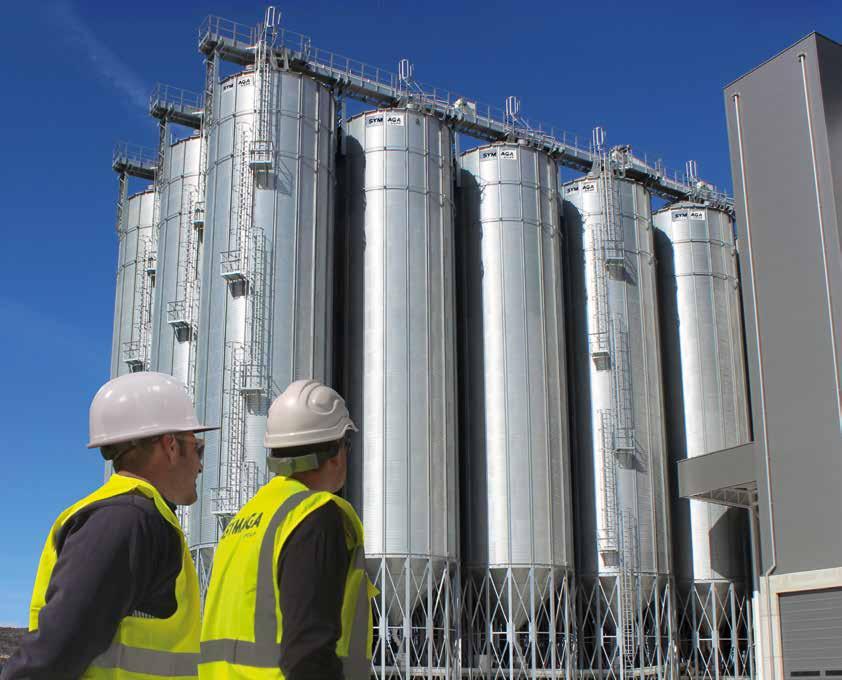
· Tightness is improved. Double sealing on both sides of the screws.
· Butyl rolls are supplied with double strip to improve assembly times.
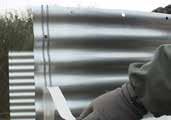
VISIT US GRAIN TECH, Bangalore, India
- 27 Aug, Stand S21 Hall 1
symaga.com • +34 91 726 43 04 • symaga@symaga.com
YOUR RELIABLE PARTNER
25
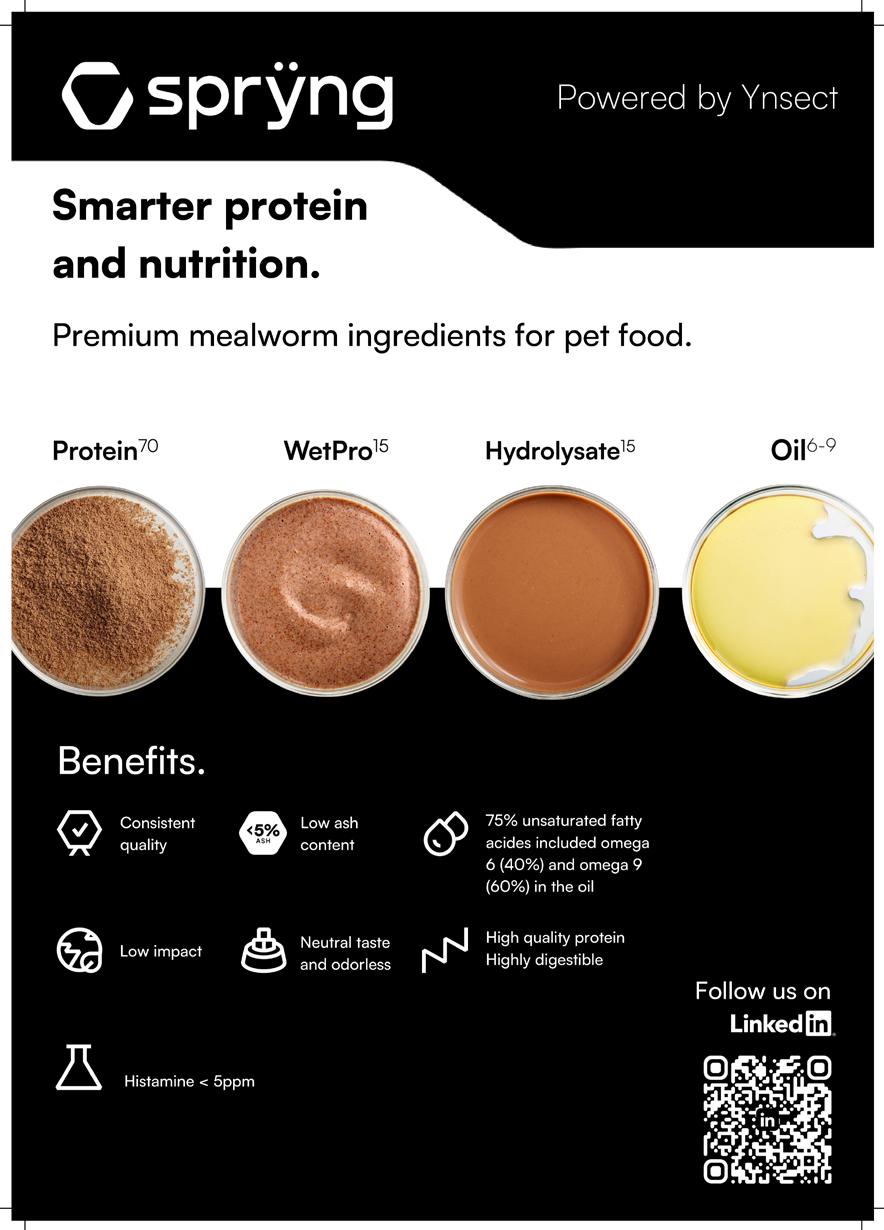


































 by Shannon Parsons, International Petfood magazine, UK
by Shannon Parsons, International Petfood magazine, UK




























































































































 Kabir Chowdhury, Sales director, Jefo
Begum Usta, Yemmak and Nick Mouthaan, Victam Corperation with our team
Kemal Burak Kayhan, Bea Van Deynse, Arpad Zsok & Deniz Gungoroglu of Bestmix Software
Taner Alapala, Ekrem Acar of Alapala with our team.
Kabir Chowdhury, Sales director, Jefo
Begum Usta, Yemmak and Nick Mouthaan, Victam Corperation with our team
Kemal Burak Kayhan, Bea Van Deynse, Arpad Zsok & Deniz Gungoroglu of Bestmix Software
Taner Alapala, Ekrem Acar of Alapala with our team.













































